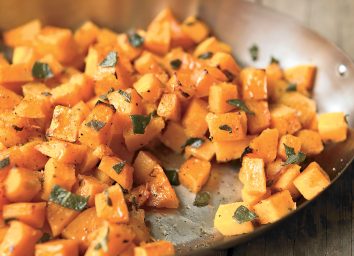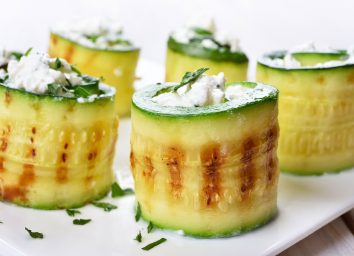Squash Is a Fall Superfood You Need to Add to Your Grocery List ASAP—Here Are the Best Kinds
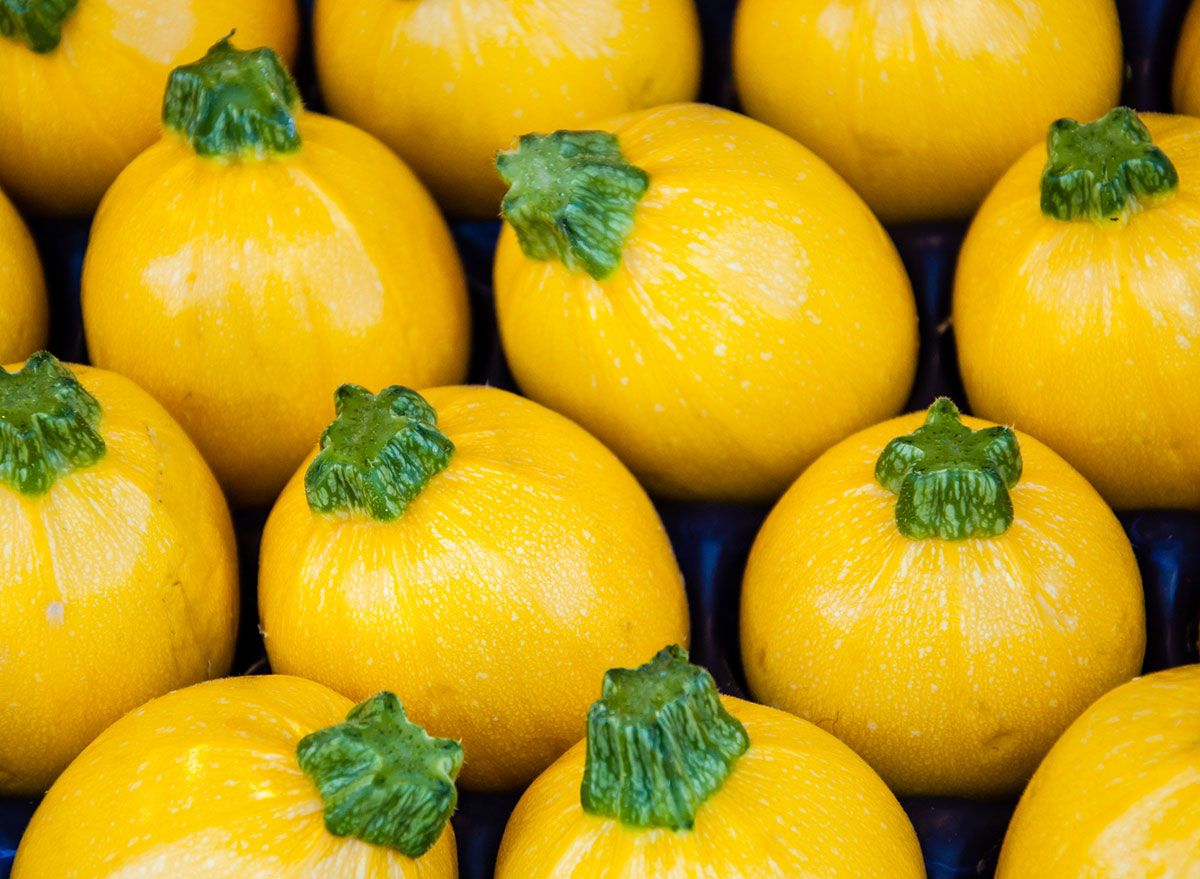
Squash varieties are the stars of the kitchen, versatile and reflective of the season they're grown. Fresh summer squash, ripe and crisp, makes a great addition to the grill, while fall's buttery varieties blend with autumn spices. Summer or fall, there are so many types of squash that there's basically a never-ending supply of delicious options.
You've probably had zucchini, and maybe you've had pasta made with spaghetti squash. But those are just the tip of the iceberg when it comes to all of the delicious types of squash out there.
Here are the 33 types of squash to know about.
Summer Squash
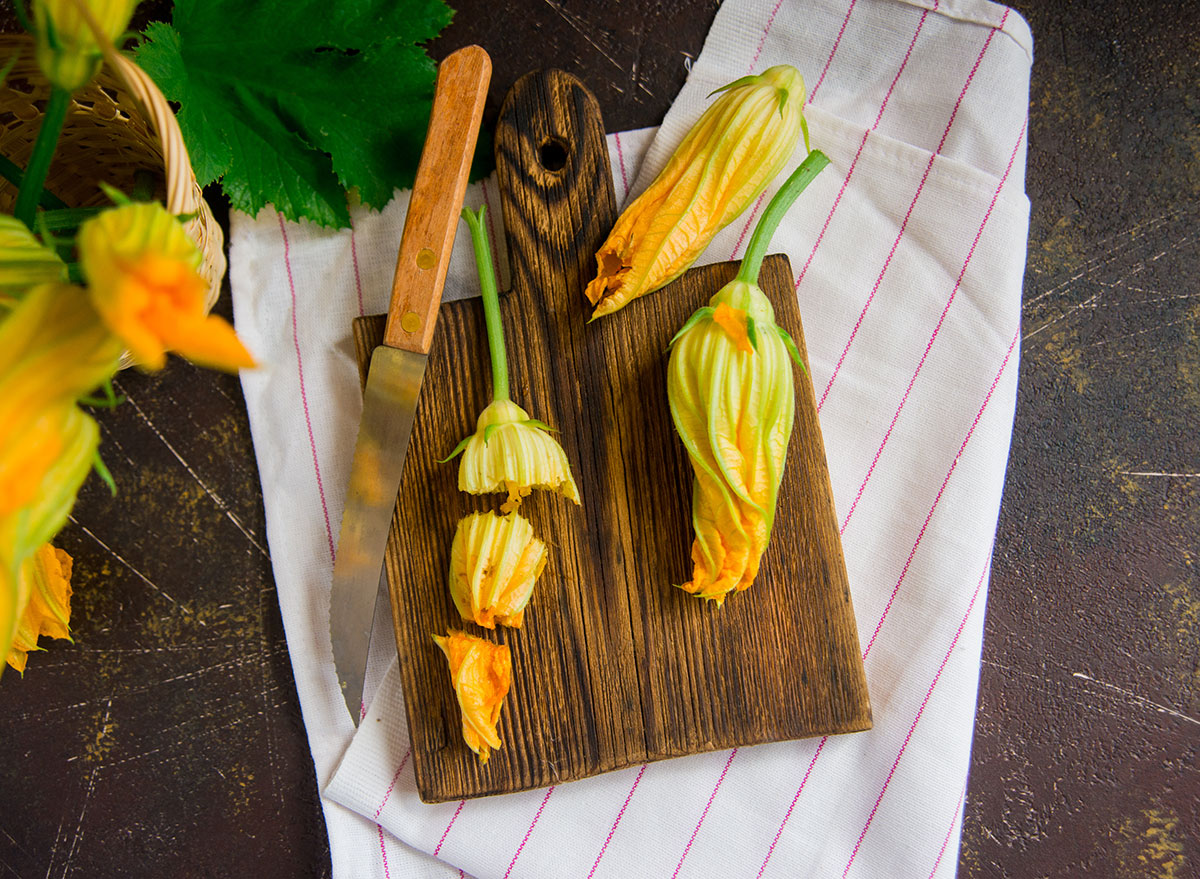
While summer is a time to enjoy the weather and relax, there's nothing lazy about summer squash. Summer squash grows on bushes, and farmers harvest it before the fruit is ripe, keeping the skin delicate and edible. While gardeners are famous for the huge amounts of zucchini in the summer season, there are plenty more varieties that you can find in farmer's markets and grocery stores from June through September.
Black Beauty
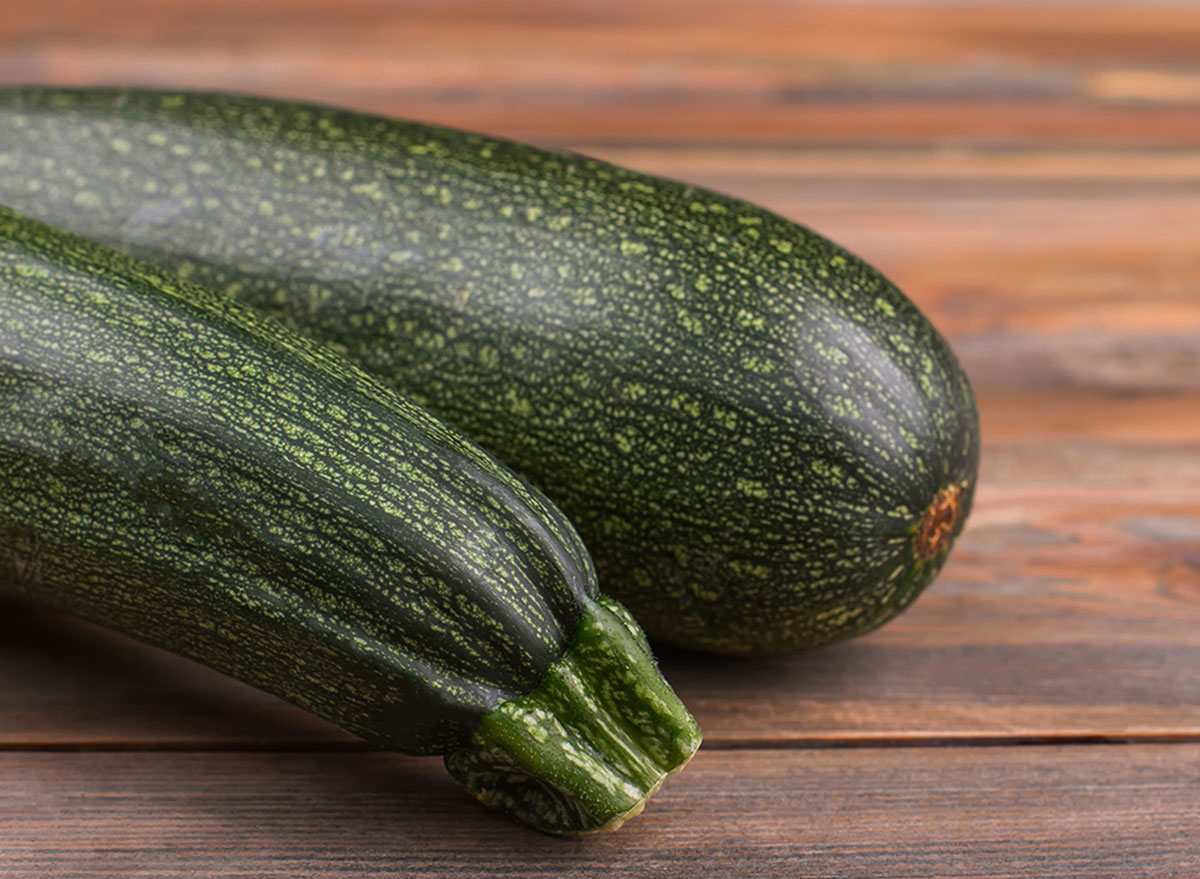
Introduced in 1957, this brand was a cross between the Salerno and Caserta zucchini. The skin is green to almost black and glossy, and the creamy-colored white flesh stands up well to stir-fries, can be sliced for dips, or makes a great addition to vegetable casseroles. Like all zucchini, they are tastiest when picked small, so look for the compact version for the best results.
We love these creative zucchini ideas.
Cocozelle
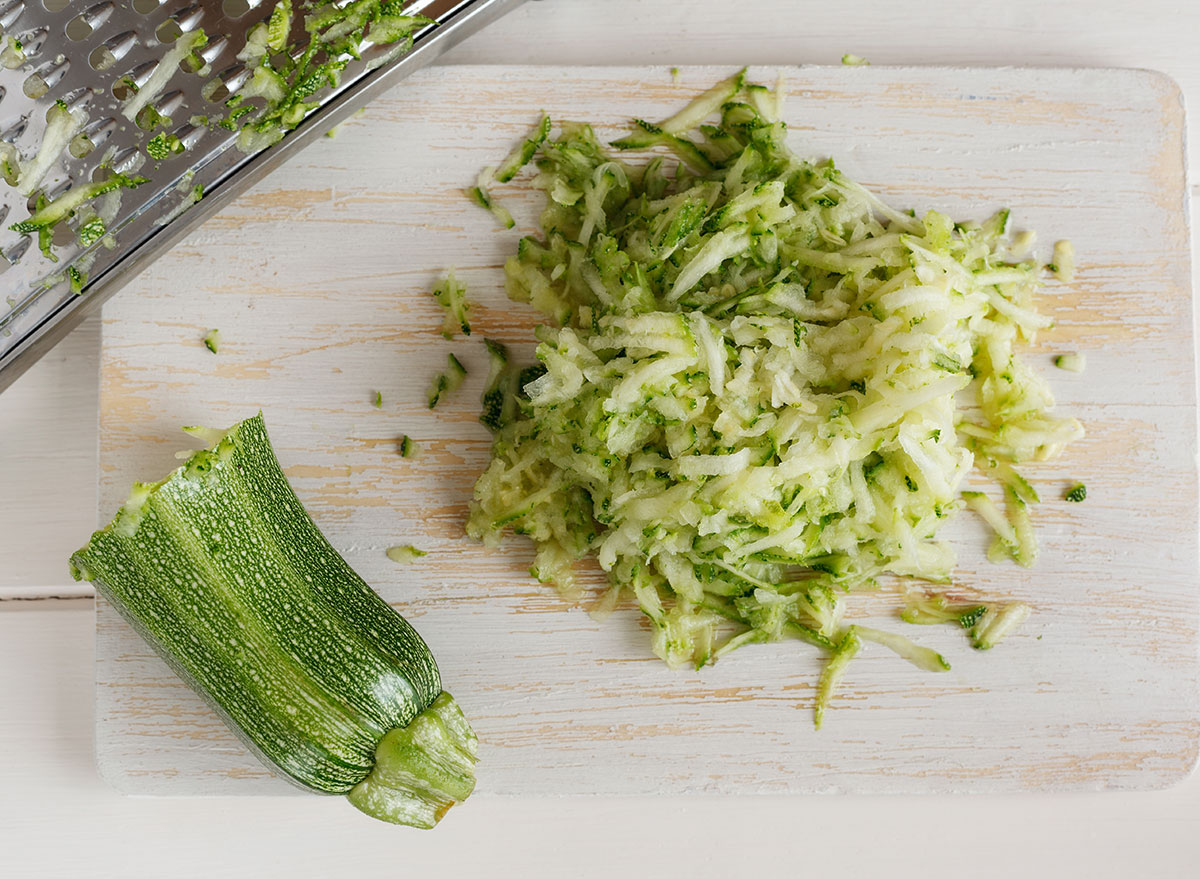
Also known by its Italian name, Cocozelle di Napoli, this heirloom squash is another variety of the prolific summer zucchini. Dark green with lighter stripes, it's known for being tender even when grown to mammoth sizes, as zucchini is apt to do. Cocozelle has fewer seeds than regular zucchini and is extra tender, making it a favorite for cooking.
Early Yellow Summer Crookneck
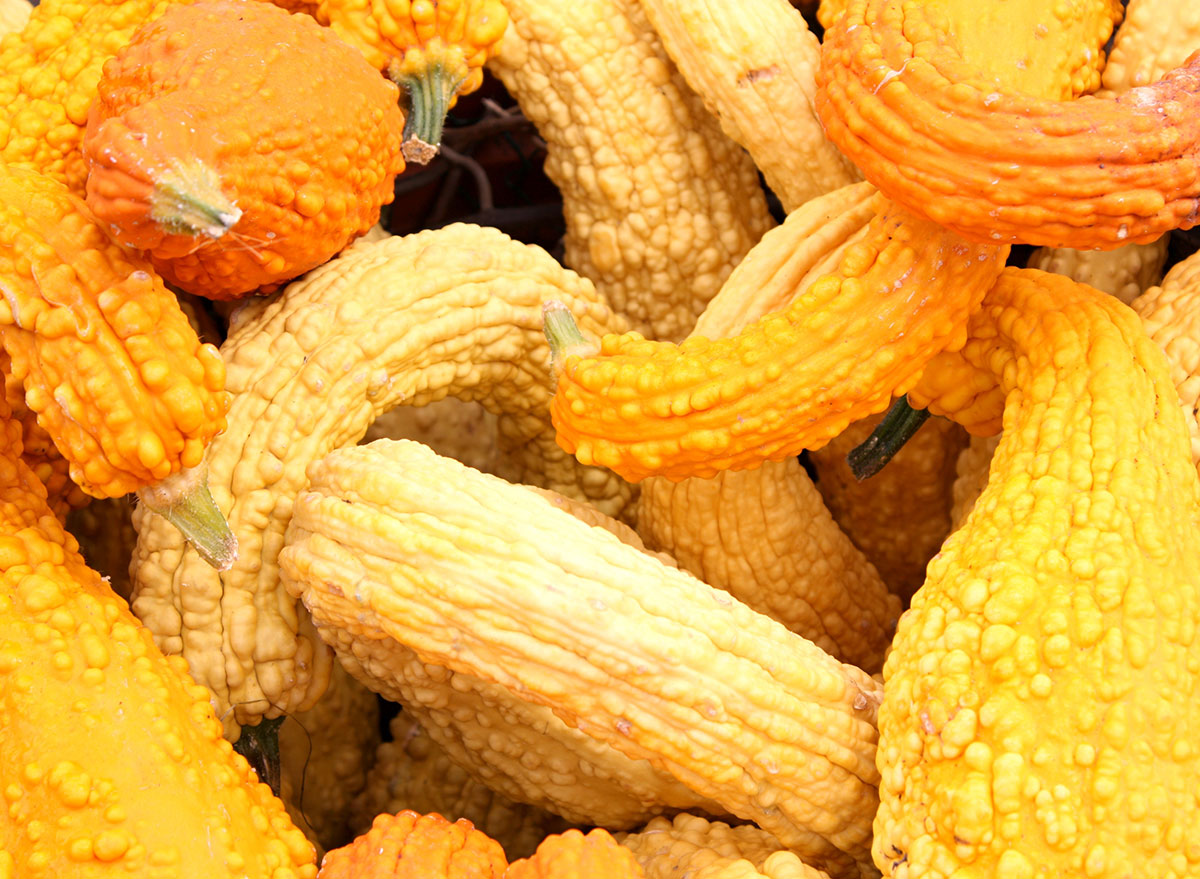
This popular squash is available in grocery stores in the summer months. Its bright, lemon-yellow skin is completely edible, and its neck is bent, resulting in the name "crookneck." The mild flavor is delicious steamed and dressed with a little bit of kosher salt and butter or sautéed with bacon and onions.
White Bush Scallop
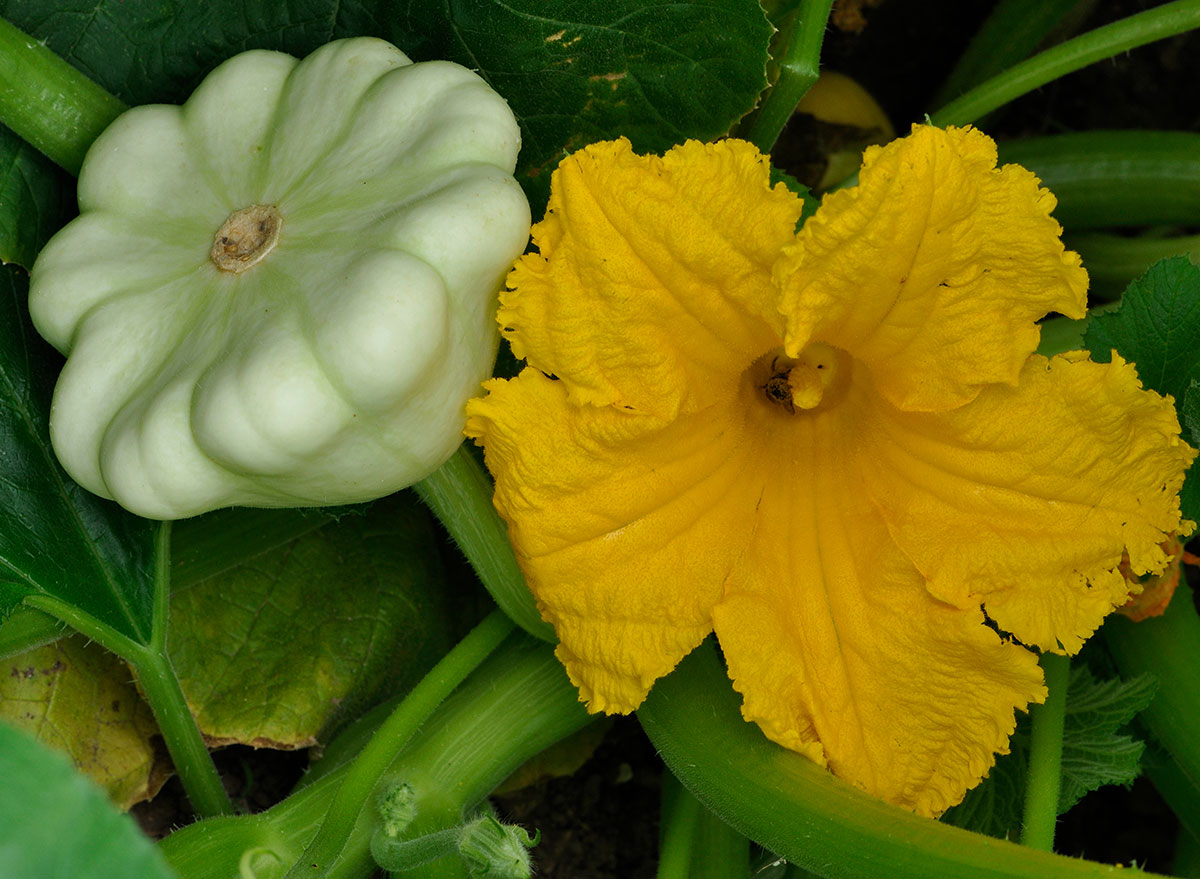
This tiny little squash is a type of Pattypan, a group of tender, small squash that are shaped like little flying saucers. The White Bush Scallop starts very light green and, as it matures, changes to a white color. It makes an elegant addition to a crudités platter and works well for oven roasting.
Gold Bar
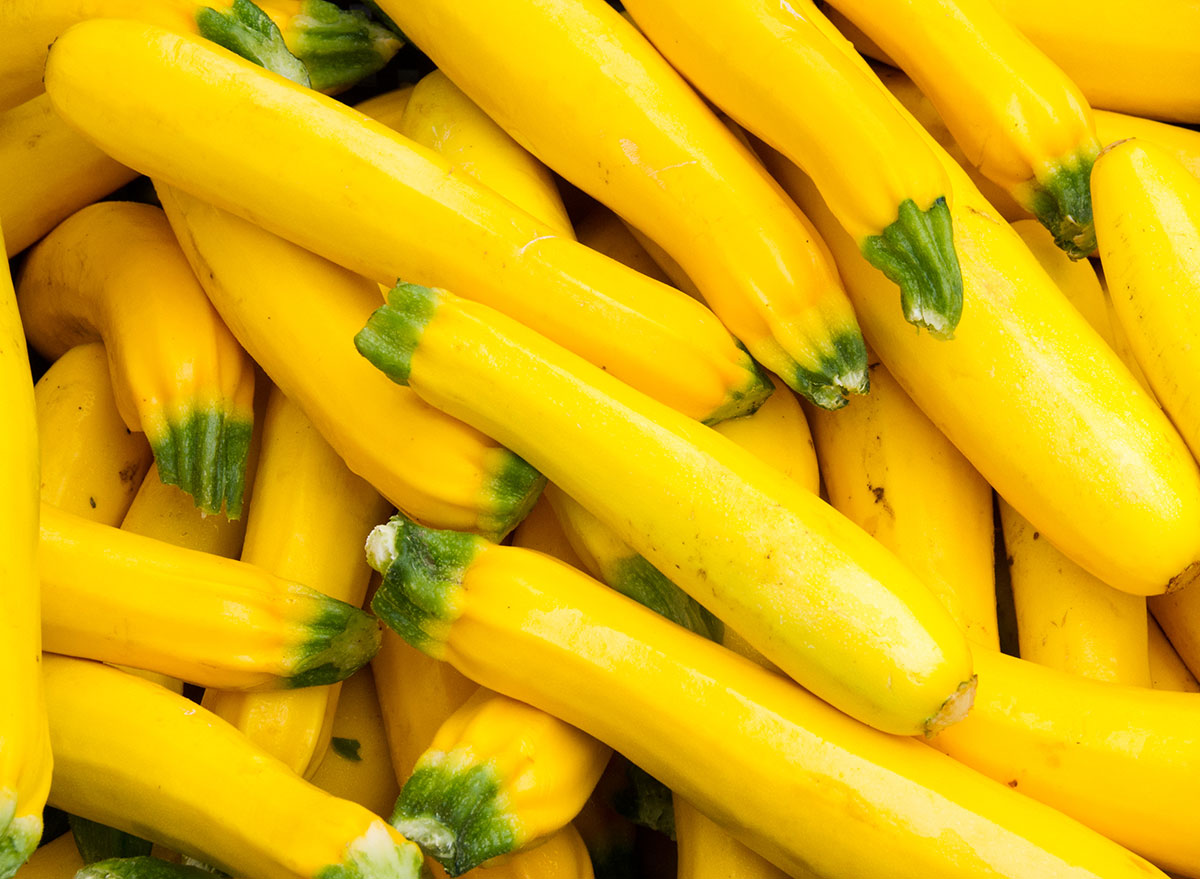
You might hear this one referred to as "yellow zucchini." But isn't "gold bar" so much more fun? This zucchini variety is bright yellow with a faint yellow stripe, and it tends to be long and thin, with green caps on both ends.
Yellow squash varieties like this one have a higher concentration of carotenoids than their green counterparts. Our body converts those carotenoids to vitamin A, a powerful antioxidant, so this is a nutrient-packed variety to choose. Gold Bar can be grated and added to doughs, spiralized to make pasta, or sliced as a pizza topping.
We love this balsamic zucchini sauté recipe.
Aristocrat
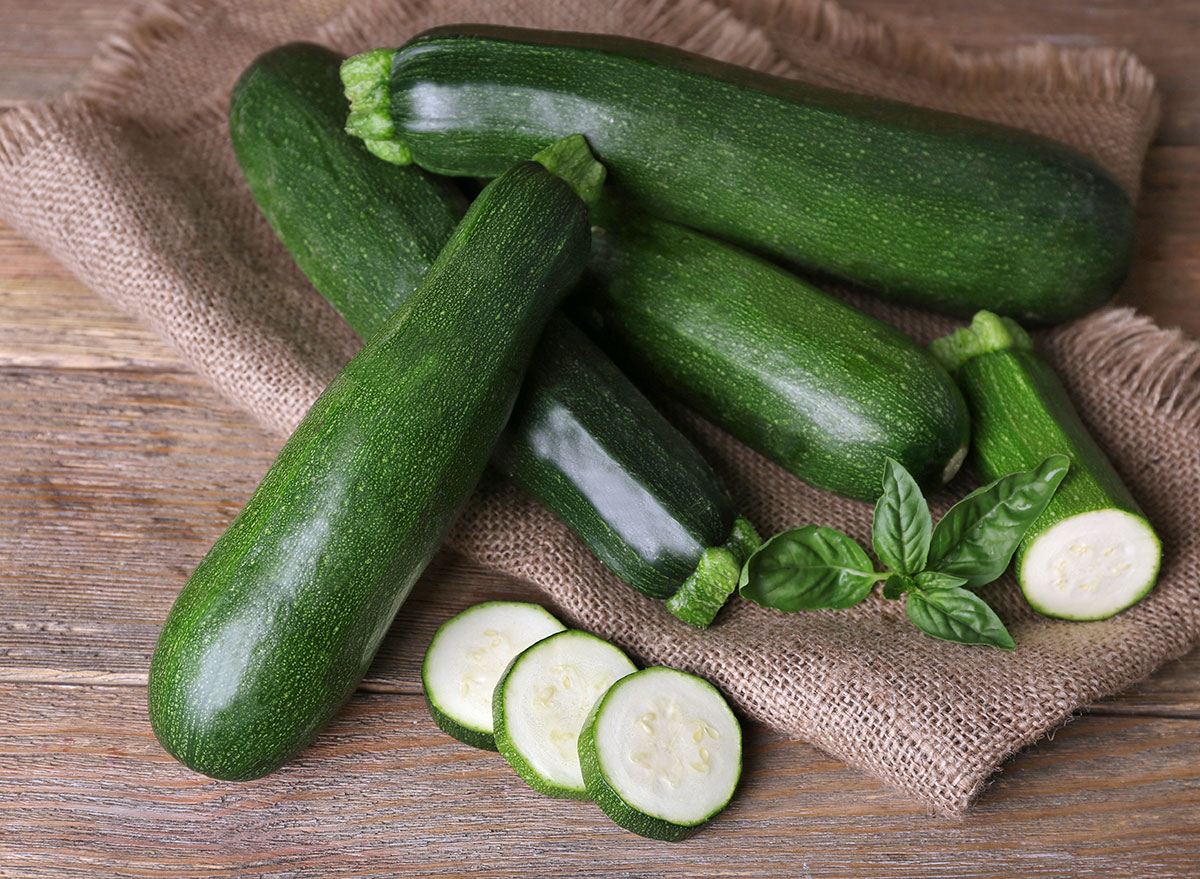
Another variation on zucchini, Aristocrat is a straight, shiny green squash. The firm flesh holds up well to searing on the grill or slicing for a crunchy addition to a summer salad.
Chefini
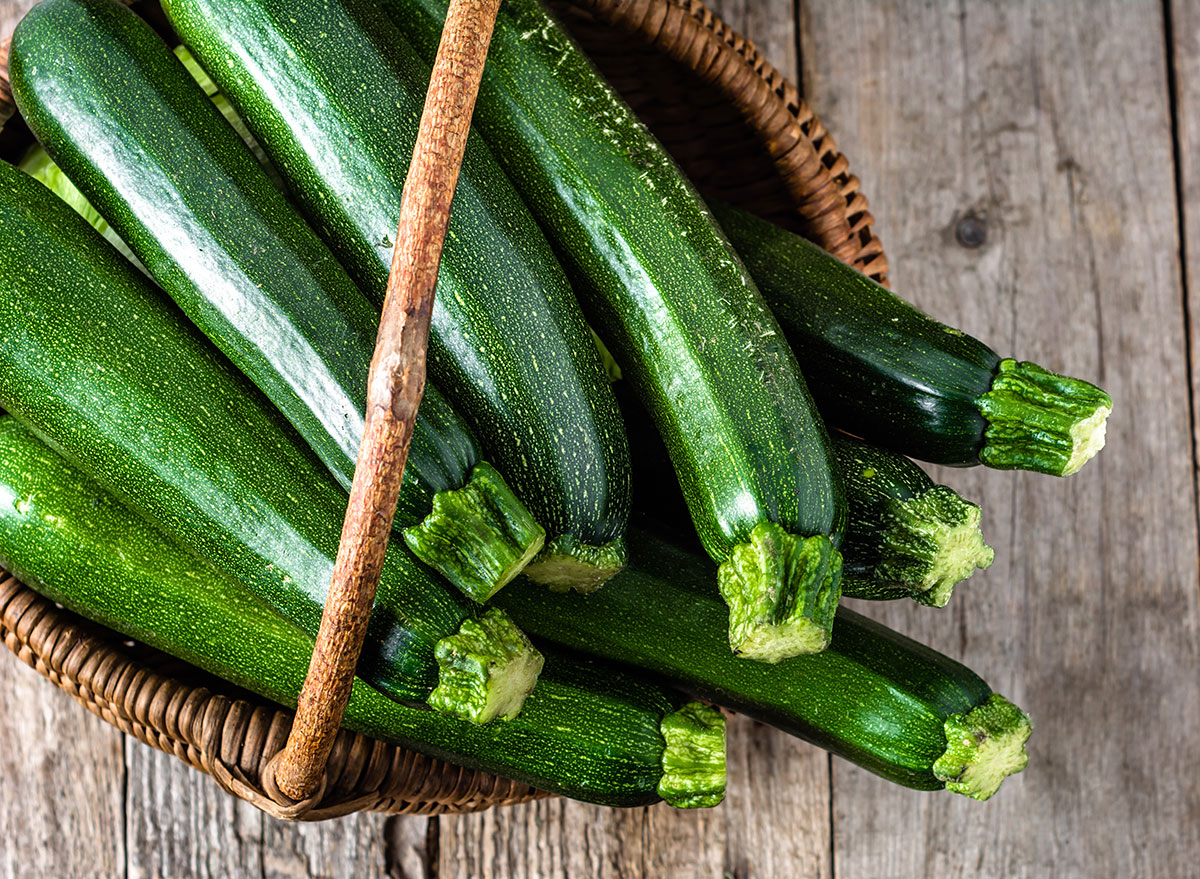
One of the earliest types of zucchini to hit the market in summer, Chefini has a glossy skin that's so dark green that it's almost black. Because Chefini, like most zucchinis, doesn't have an overpowering taste or texture, it can be used as a pasta substitution without changing the flavor of the dish. Chefini, on its own, makes a healthy side dish for summer's grilled meats, sautéed with a little bit of butter and salt.
We love this zucchini carbonara with bacon recipe.
Spineless Beauty
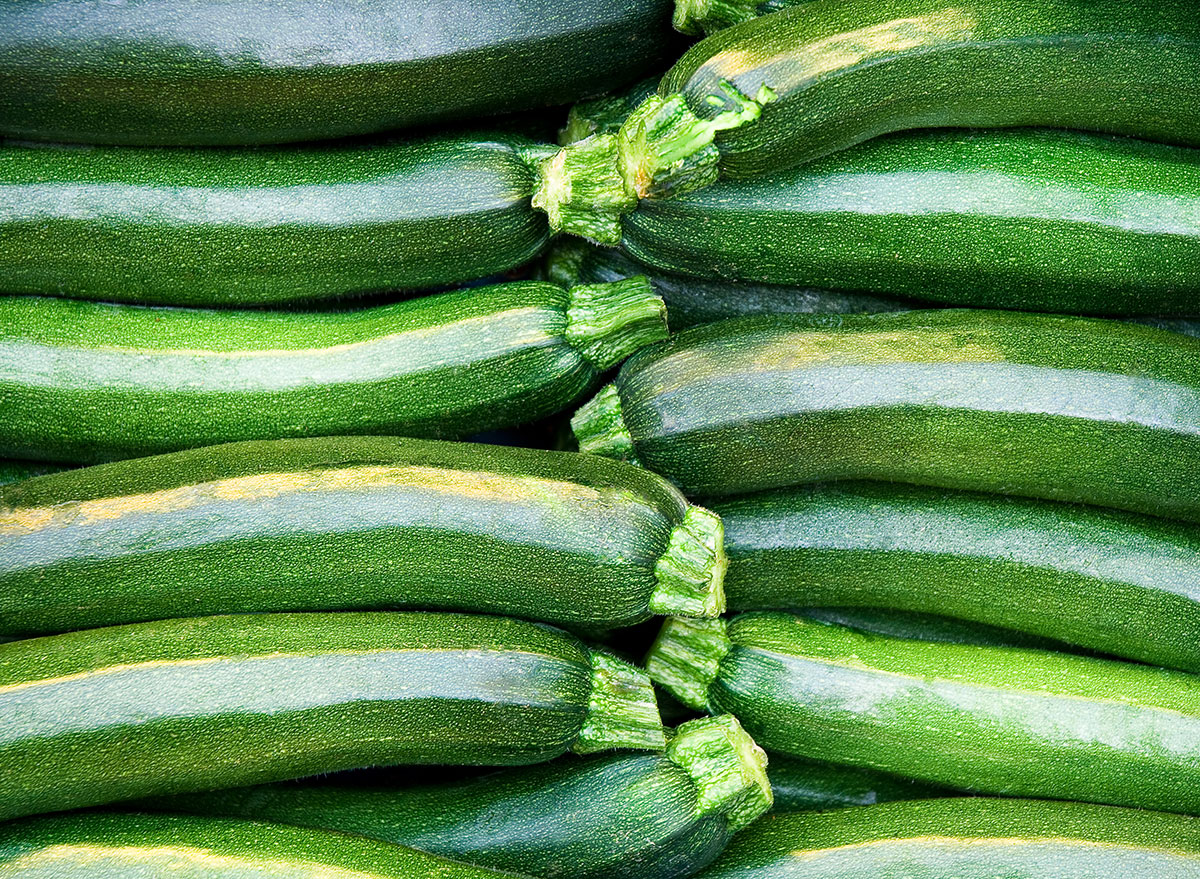
This squash bush yields bunches of bright green fruit, with—a bonus to the gardener—very few spiny hairs on the plant. With fewer barbs, the harvested zucchini has less damage and therefore yields more fruit, making it a common find in farmers' markets late in the season. Cooked or raw, the delicate flavor pairs nicely to every zucchini squash recipe.
We love these 25 zucchini recipes.
Gold Rush
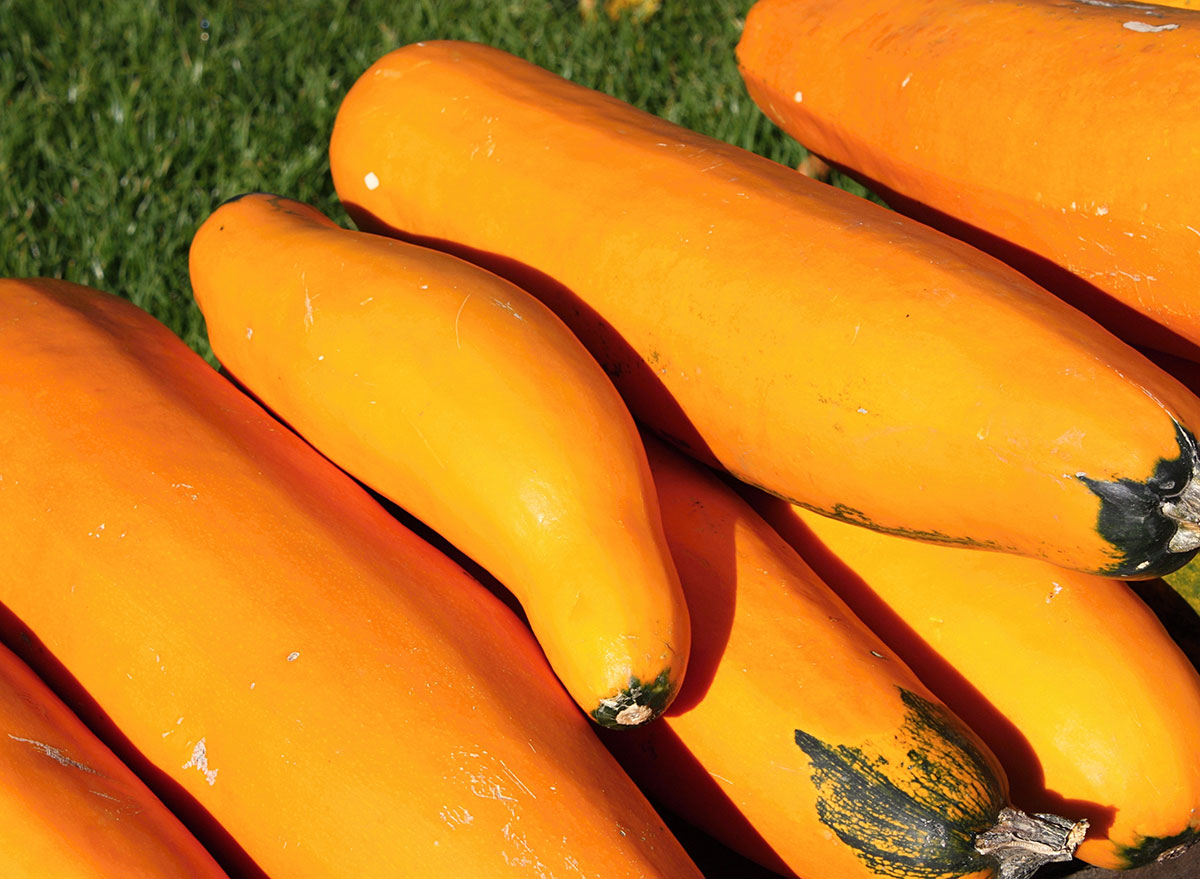
Gold Rush is shaped like other zucchinis but has a bright, golden-yellow color and is typically seven to eight inches long at harvest. Cooks can hollow out the seeds and stuff the squash or cut it up and add it to other slices of green zucchini for more color on a summer plate.
Gourmet Globe
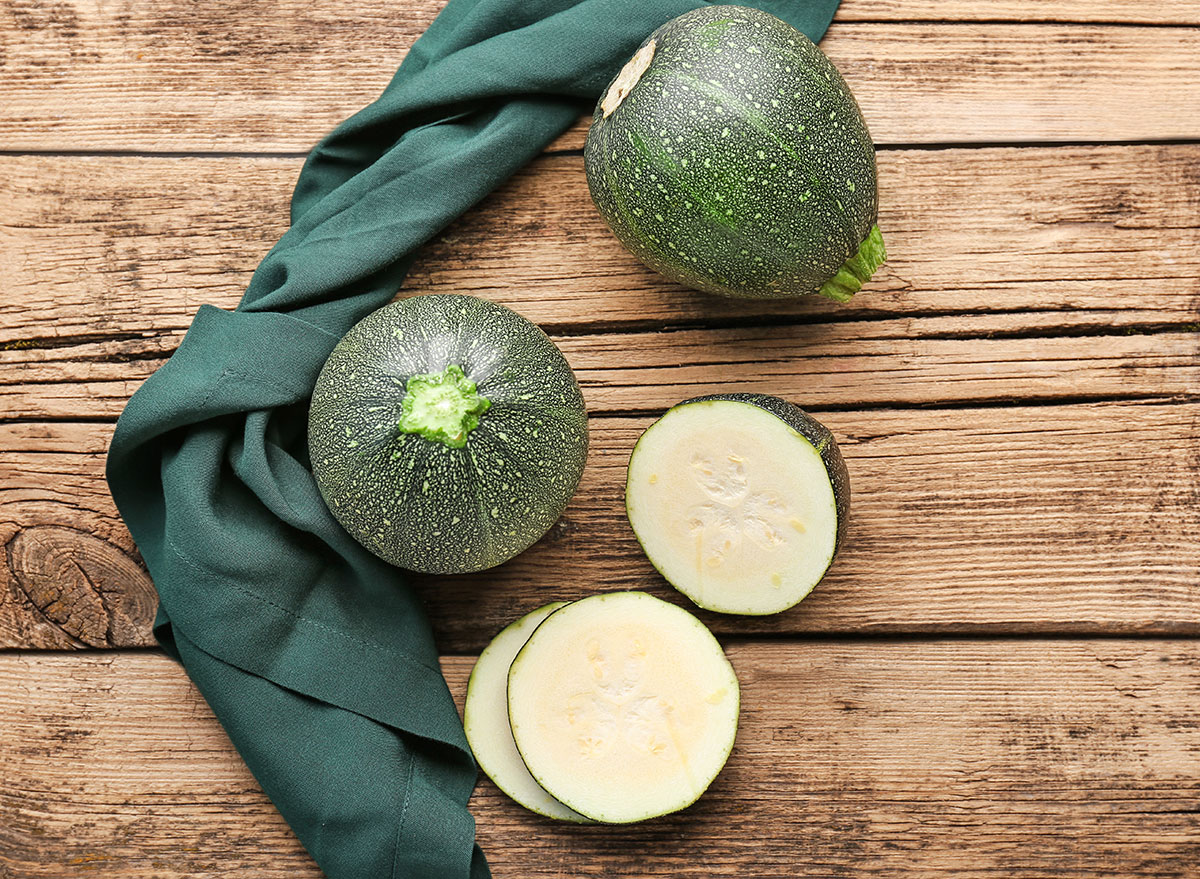
This round squash is grass-green with light green striations. It's sweet, mildly-flavored, and tender. Split in half, it reveals white flesh with quite a few seeds, which can be removed and roasted for a healthy snack.
Migrating into America by way of France, the French call Gourmet Globe "Ronde de Nice." Indeed, this green globe is a "nice round" squash. It can also be referred to as a "roly-poly" or apple squash due to its shape.
As it's round, the Gourmet Globe squash also lends itself to stuffing. Try it the French way, filled with beef and onions.
Peter Pan
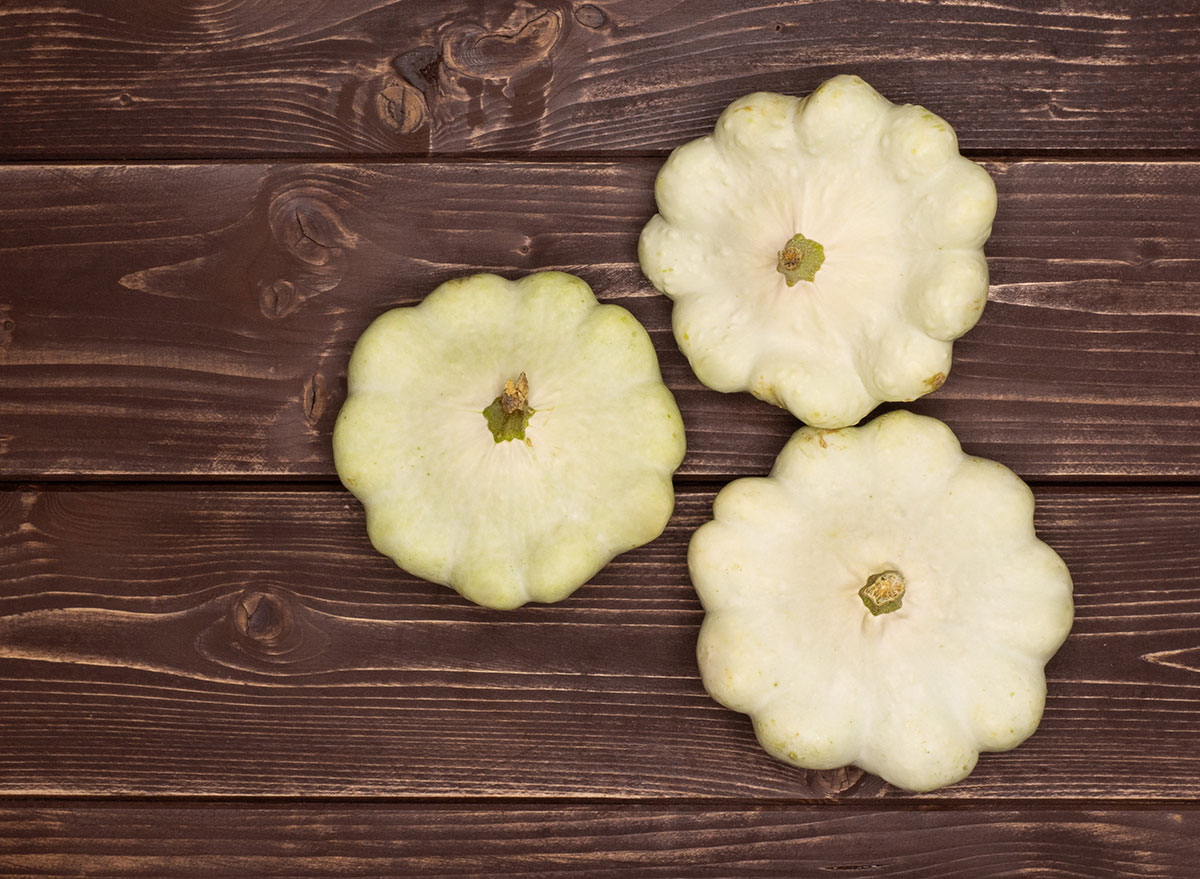
This miniature Pattypan squash can be sunny yellow or emerald green with scalloped edges. It has a buttery flavor with small, indistinguishable seeds.
Tossed with herbs and grilled, roasted, or steamed, Peter Pan squash is easy to cook by itself or to add to any summer squash recipe.
Tromboncino
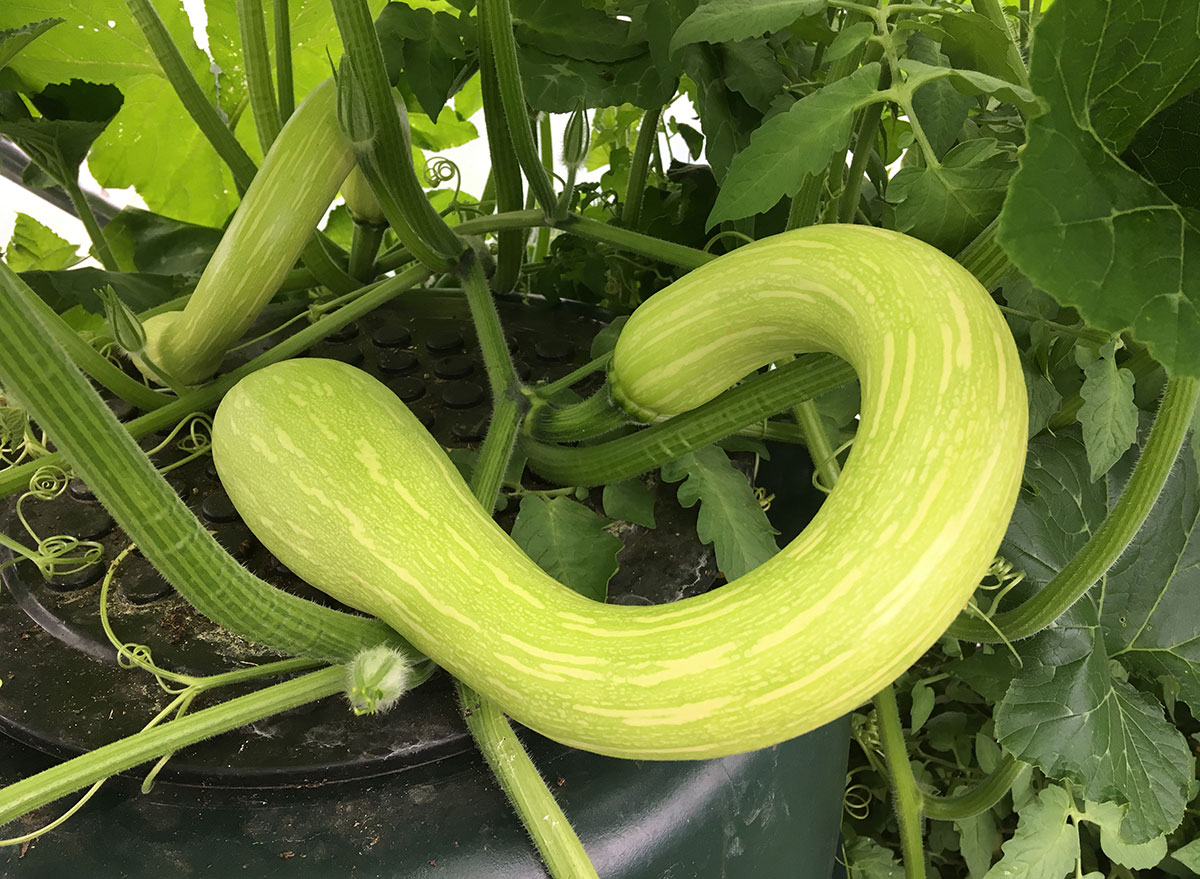
Originating in the city of Albenga, Italy, this long squash is most like butternut, even though it's considered a summer squash. The long neck grows out from a bulbous bottom, free of seeds and sweeter than zucchini. They can reach up to three feet and are green to tan in color.
Cousa Squash
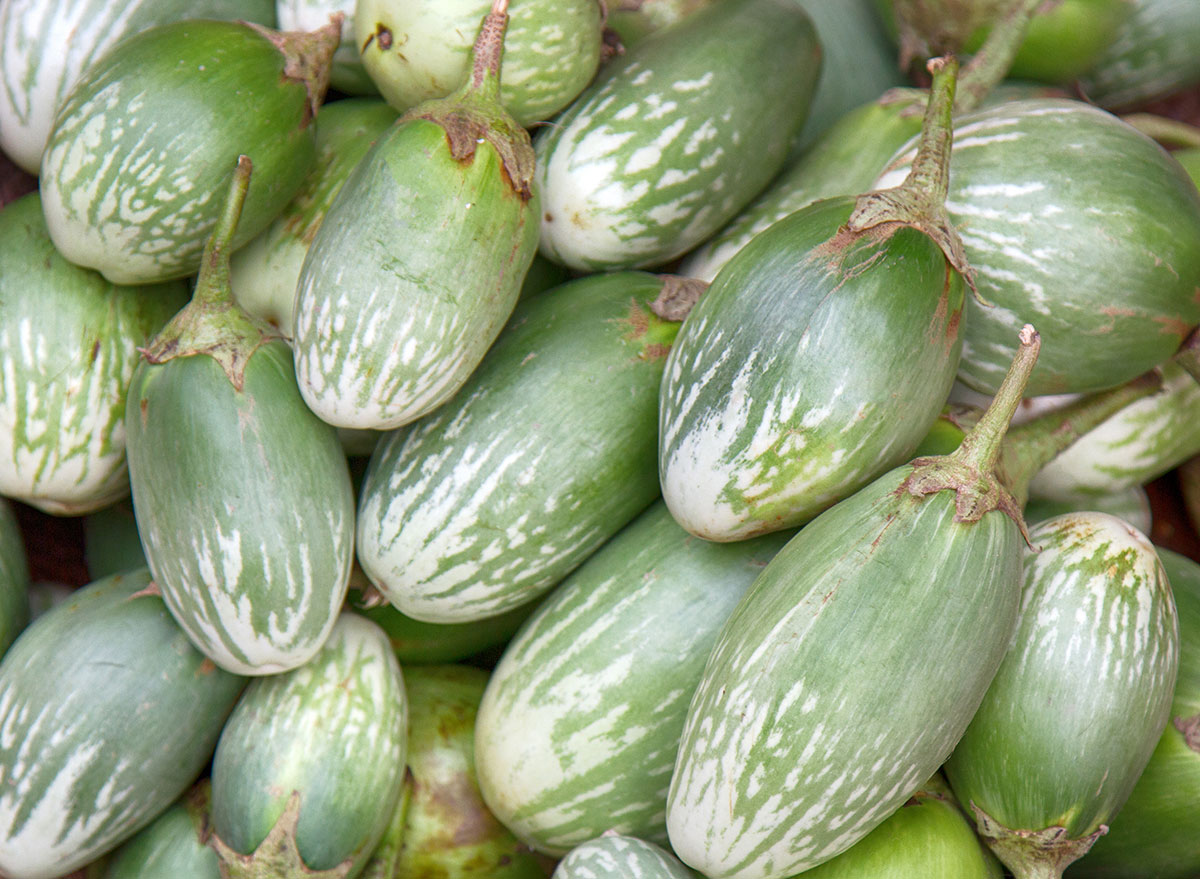
Found in Lebanese and Syrian recipes, Cousa squash originated in the Middle East. Similar to zucchini, it's versatile, with a thinner skin and sweeter flavor.
Many recipes call for stuffing the Cousa, and its boat-like shape creates a bowl for a traditional rice and lamb mixture flavored with allspice, lemons, and tomatoes.
Squash Blossoms

While technically not a squash, the blossoms of the squash fruit are edible and delicious. Flowers are harvested when summer squash, especially zucchini, is abundant.
Preparation is easy. Remove the insides, stuff with a cheese or seafood blend, and pan or deep fry. Squash blossoms also make great pizza toppings or pasta additions, and you can even eat them raw. Their flavor is reminiscent of the green, mild taste of zucchini.
Sundrops
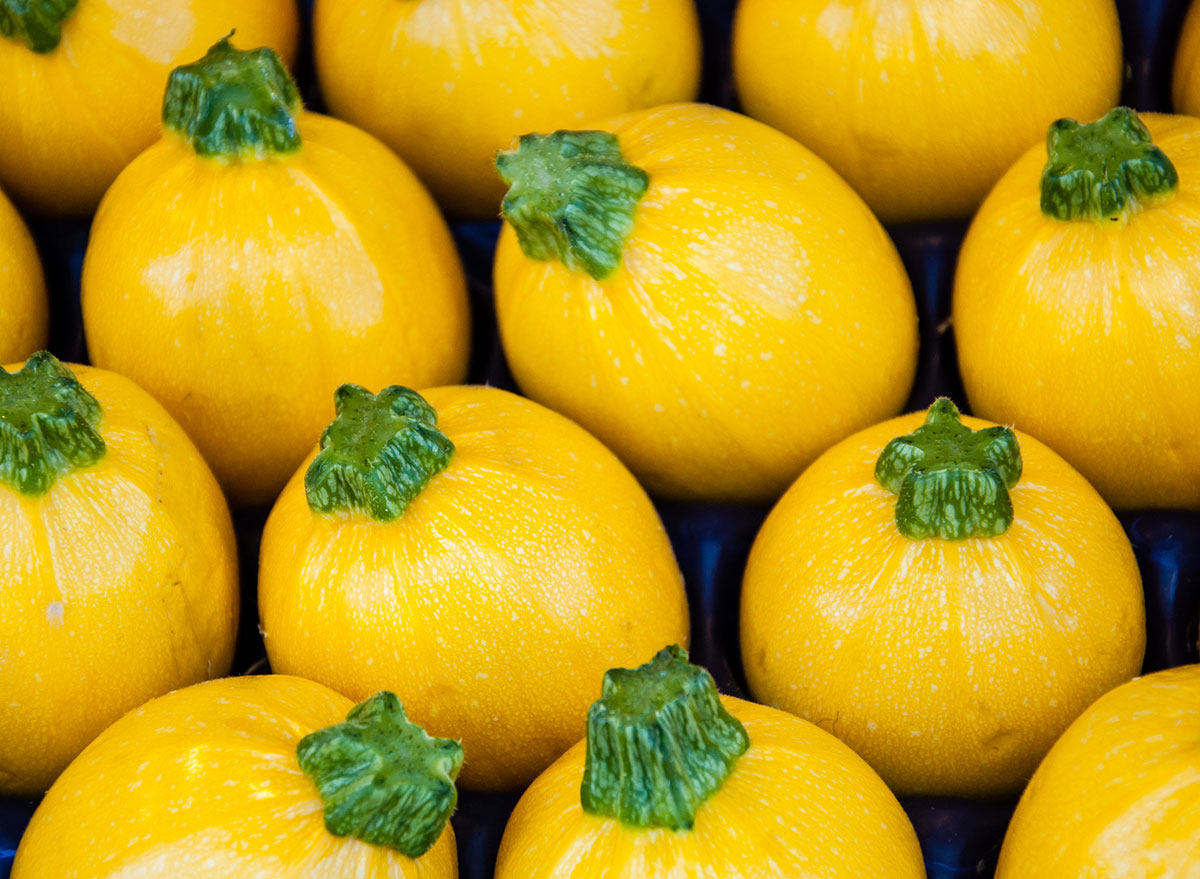
This type was the very first oval-shaped squash introduced to North America. The name reflects the color—the bright yellow small squash are found nestled in the green leaves of their bush. Hard to find, sundrop squash is a lucky discovery at farmer's markets or vegetable stands.
Winter Squash
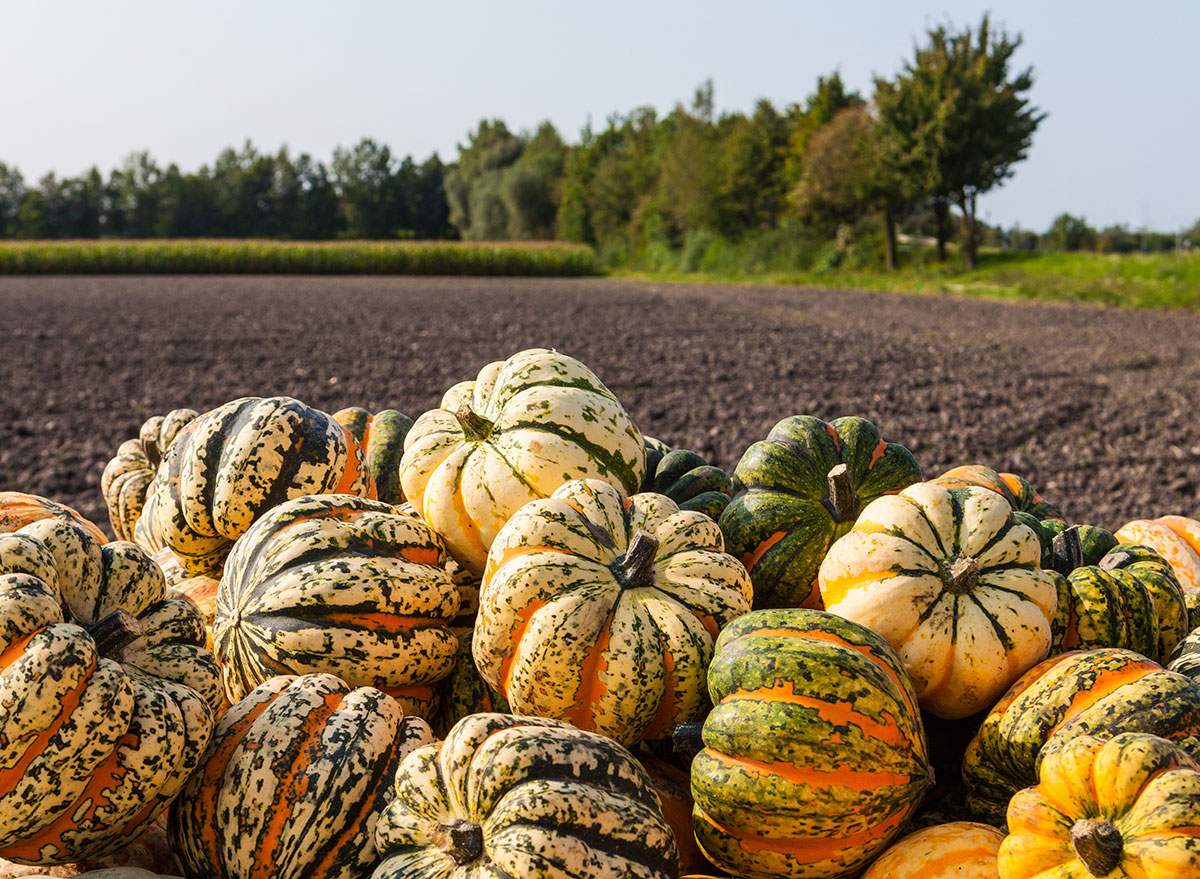
No less tasty, the varieties of winter squash are notably different from their summer cousins. Maturing on the vine creates a thick, hard rind and tough seeds, but it also allows winter squash to be stored successfully for three to six months. Full of fall flavor, these varieties are both beautiful and appetizing.
Connecticut Field Pumpkin
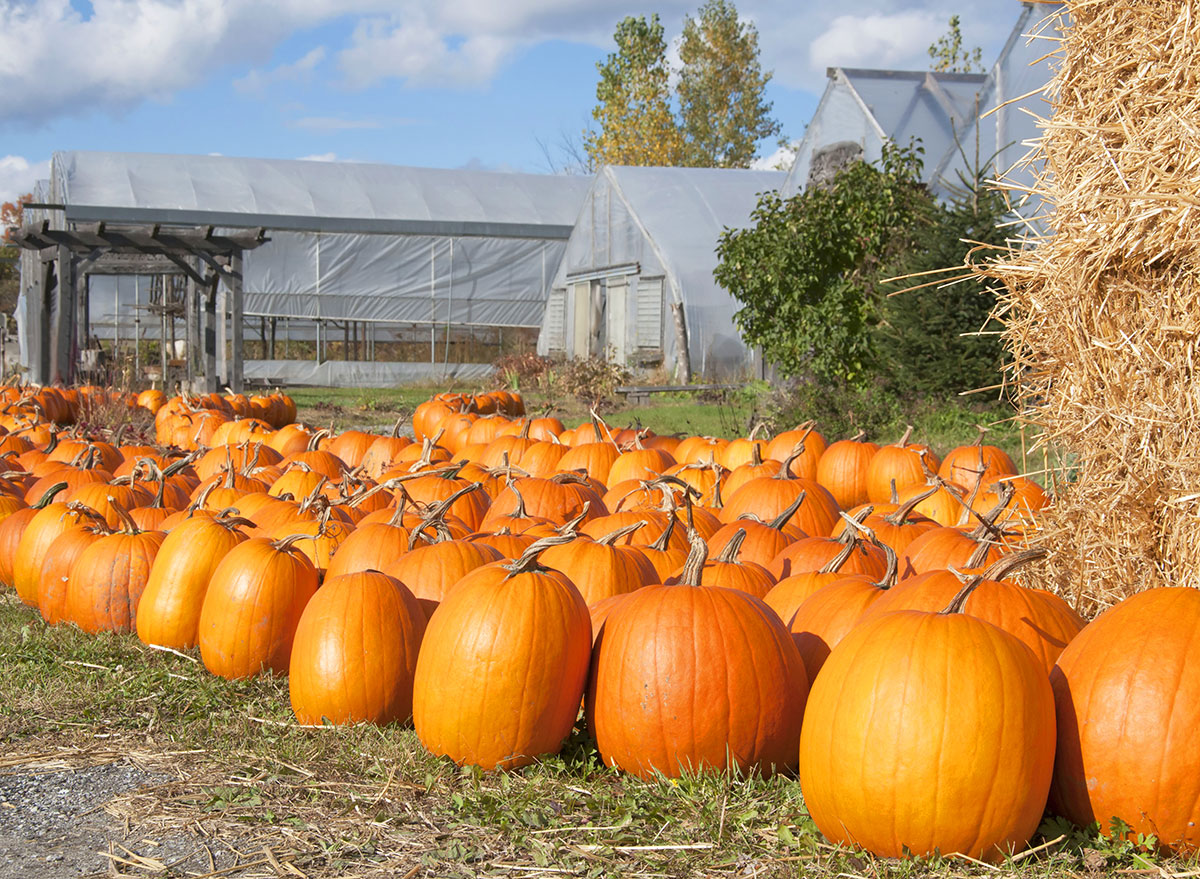
Pumpkins and squash are both part of Cucurbitaceae, the gourd family of flowering plants. And Connecticut Field Pumpkins are one of the oldest varieties. This orange giant is typically used for snaggle-toothed Jack o' lanterns at Halloween.
The rounded globes grow with a flat end, allowing them to stand up and display their orange, smooth rind. Also used for baking, the light-colored flesh is mild and sweet. The heirloom seeds date back to the 1700s when Native American populations grew them for food.
Acorn
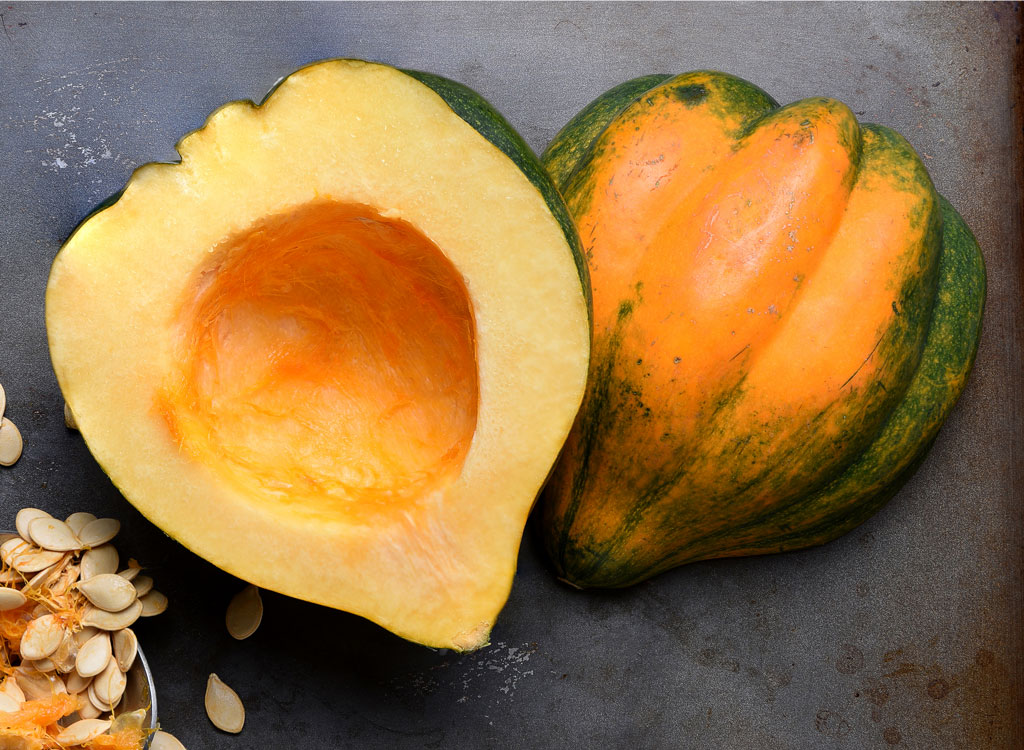
Named for its similar shape to an acorn, the acorn squash is characterized by a hard, green rind with sweet orange flesh. Because it cuts into a bowl shape, it makes a great holder for sausage and apples, quinoa and pecan stuffing, or rice dishes for baking in the oven.
Considered part of the three sisters planting method in Native American culture (the three sisters are beans, corn, and squash), the acorn squash bush provides shade to create an ideal growing environment. As an added bonus, the three sisters make a complete protein for our body to use when we eat them together.
Ambercup
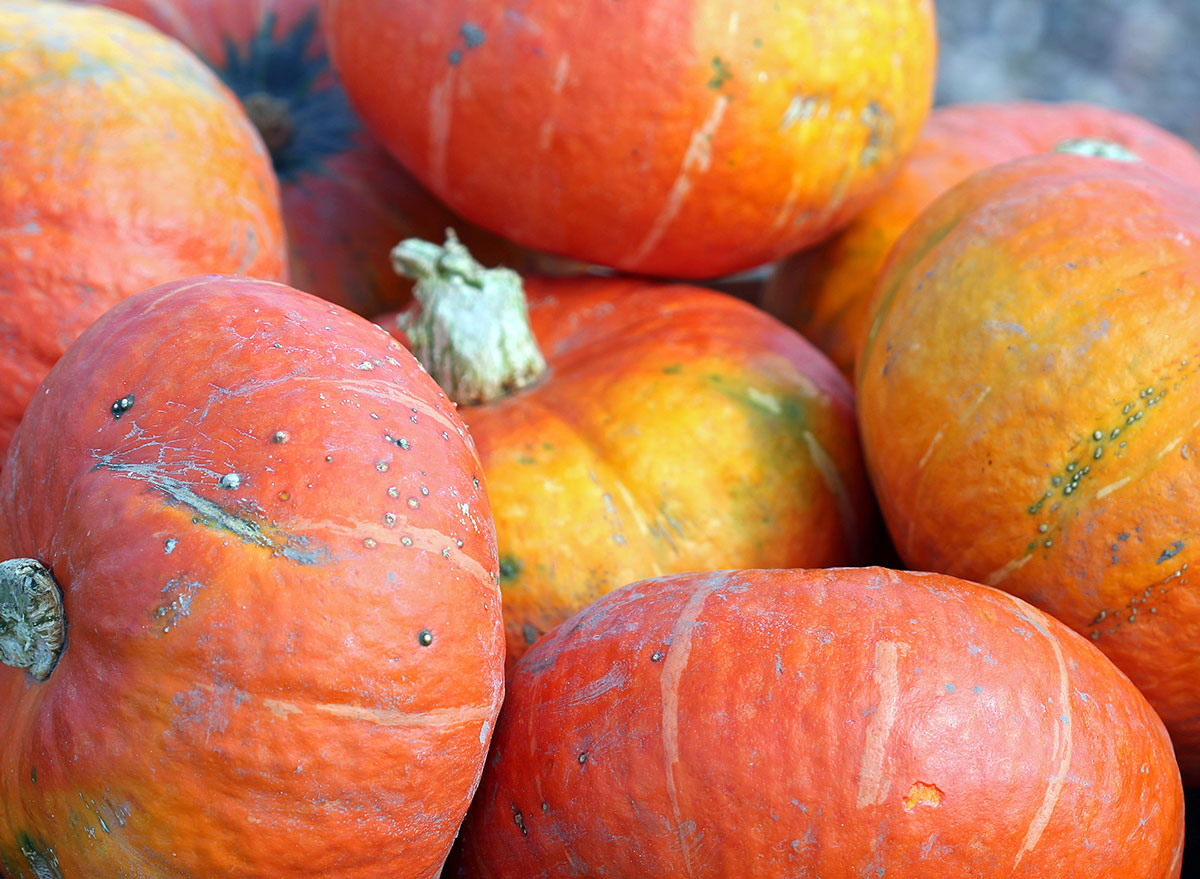
Also called Red Kabocha, Ambercup squash looks like a small, dark orange pumpkin. Ambercup is a great squash to stuff, small and easy to bake in the oven. The skin is slightly thinner than other squash varieties, so cutting is a breeze, making kitchen time a little quicker.
Red Kuri
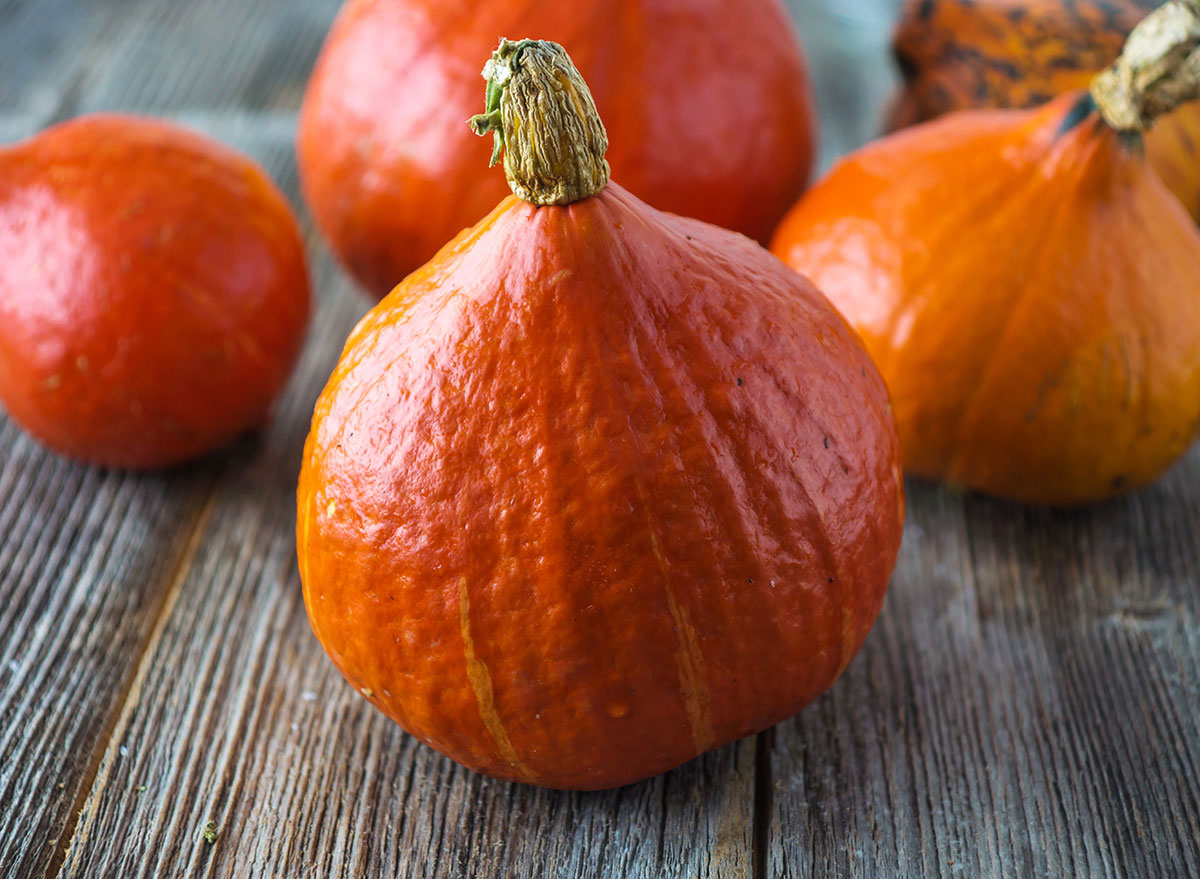
The Red Kuri looks different from other winter squash. The skin of the small, teardrop-shaped fruit is hard, but it can be eaten when cooked.
After the cooking process, it retains its bright reddish-orange hue, reflecting fall's colors on the plate. The flavor of Red Kuri reminds you of the cooler weather, rich and tasting slightly of chestnuts.
Long Island Cheese Pumpkin
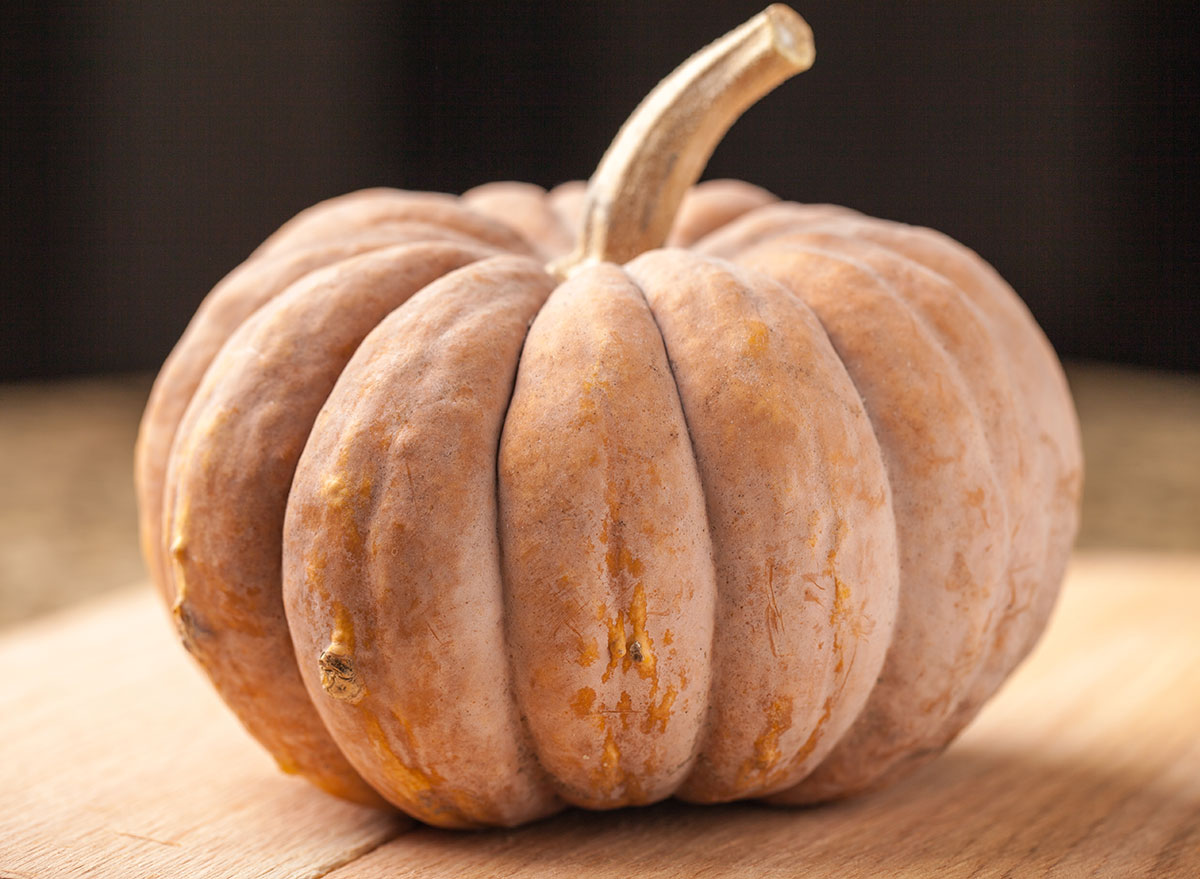
This heirloom variety was saved by Ken Ettlinger, a Long Island natural science educator who worked to save the seeds. His work in the 1970s allowed farmers to establish this crop today, giving us an option for a farmer's market find of rich, sweet pumpkin, very similar in appearance to a cheese rind.
Autumn Cup
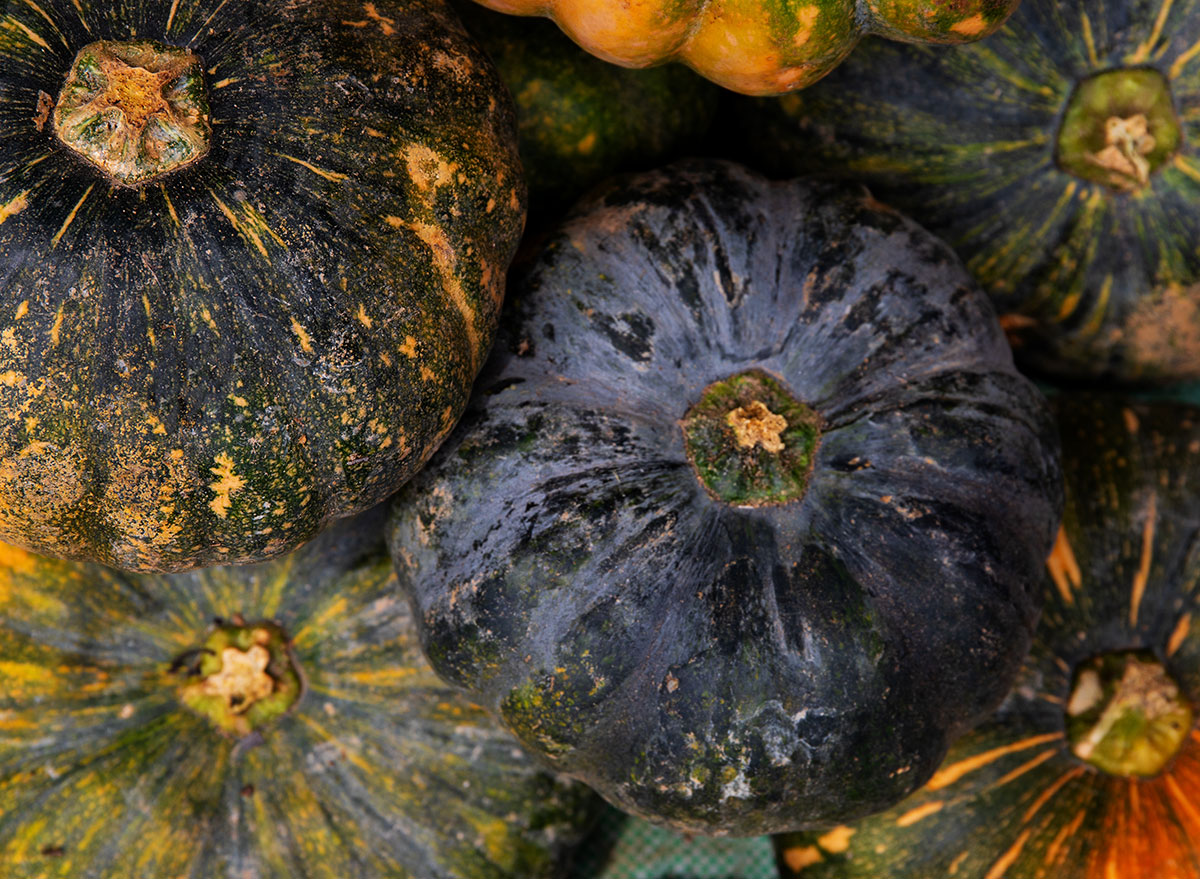
Buttercup and Kobocha combine to create this dark green, smaller squash. The yellow flesh has a rich flavor without any strings. The smooth, sweet consistency makes a perfect soup and achieves a caramelized flavor when roasted in the oven, tossed with a little olive oil and salt. The squash also stores well in a cool, dark location.
Butternut

If you're struggling to find some of the other varieties of winter squash, this one is everywhere. Recipes also abound, from butternut squash ravioli to soup or a simple puree.
The bell-shaped gourd can be split in half and roasted in the oven, cut side down, coated with olive oil, salt, and pepper or in a shallow bath of water. The delicious flesh caramelizes and can be scooped out to make a delicious accompaniment to meat or other vegetables.
We love this classic butternut squash soup recipe.
Carnival

Slightly sweet and nutty, the carnival squash has a dappled green, yellow, and white rind that makes a festive addition to fall decorations. This type of squash was developed from crossing an acorn squash and a sweet dumpling squash, resulting in the riotous color.
The thick skin is a challenge to cut, but it's easy to remove after roasting. The flesh is coarser than other winter squash, but the squash is worth it, delicious and packed with nutrients and immune-boosting antioxidants.
Delicata
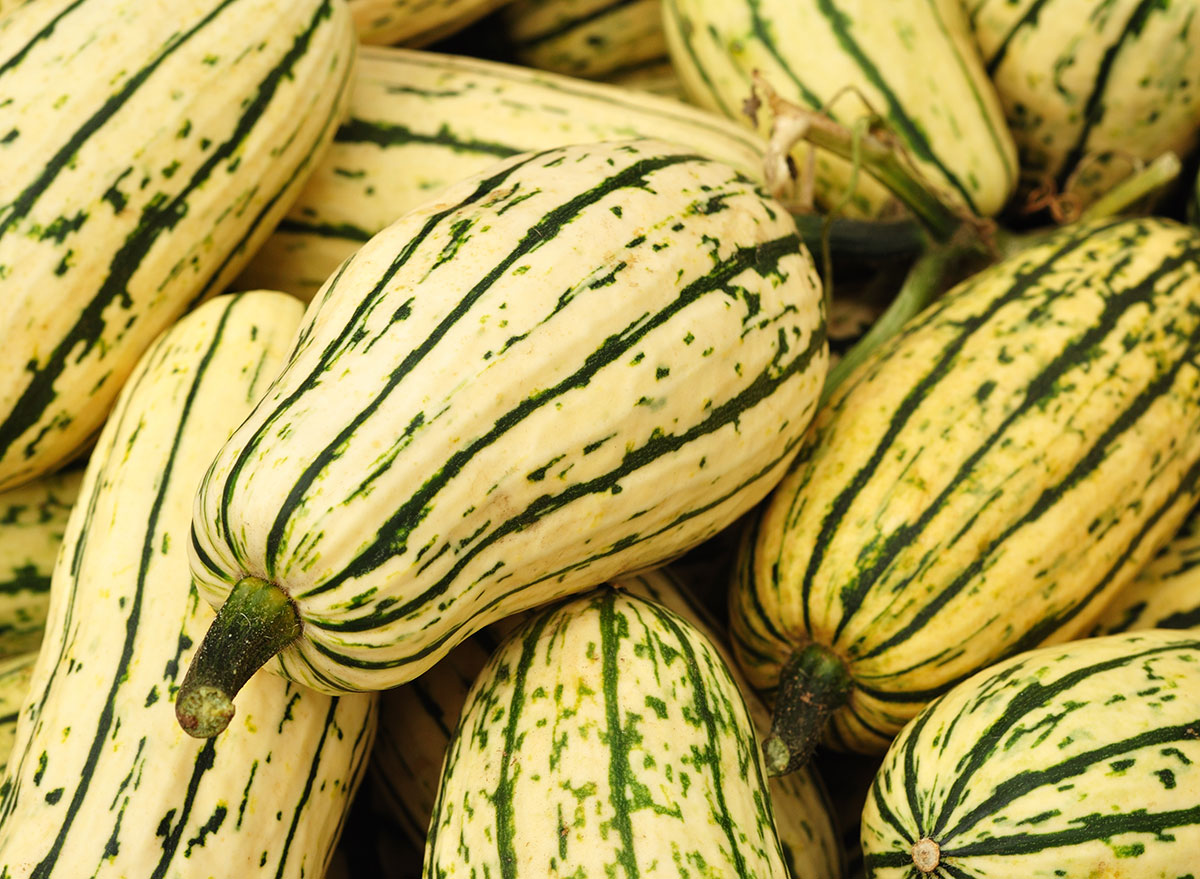
Delicata is a squash that goes by many names, including peanut squash and Bohemian squash. The flavor is reminiscent of corn and sweet potatoes. As the name infers, the skin is so delicate that you eat it along with the rich flesh after cooking. What could be easier than that?
Fairytale
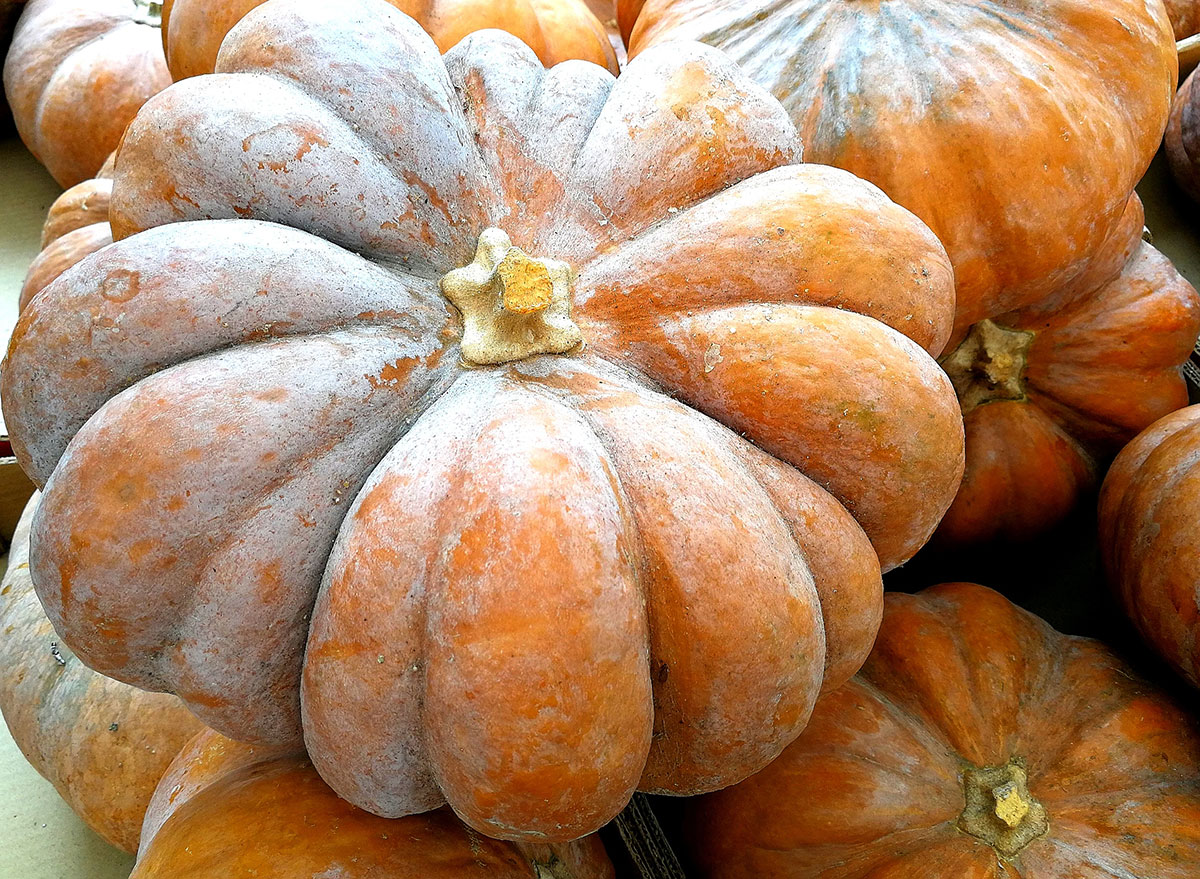
This heirloom variety comes from French roots and has its own name in the region, Musquee de Provence. The deep, flared ridges bring to mind Cinderella's pumpkin carriage, inspiring the name. You may be surprised to know that they are delicious to eat, bright orange and sweet. More than just decoration, they complement any roasted squash recipe.
Gold Nugget
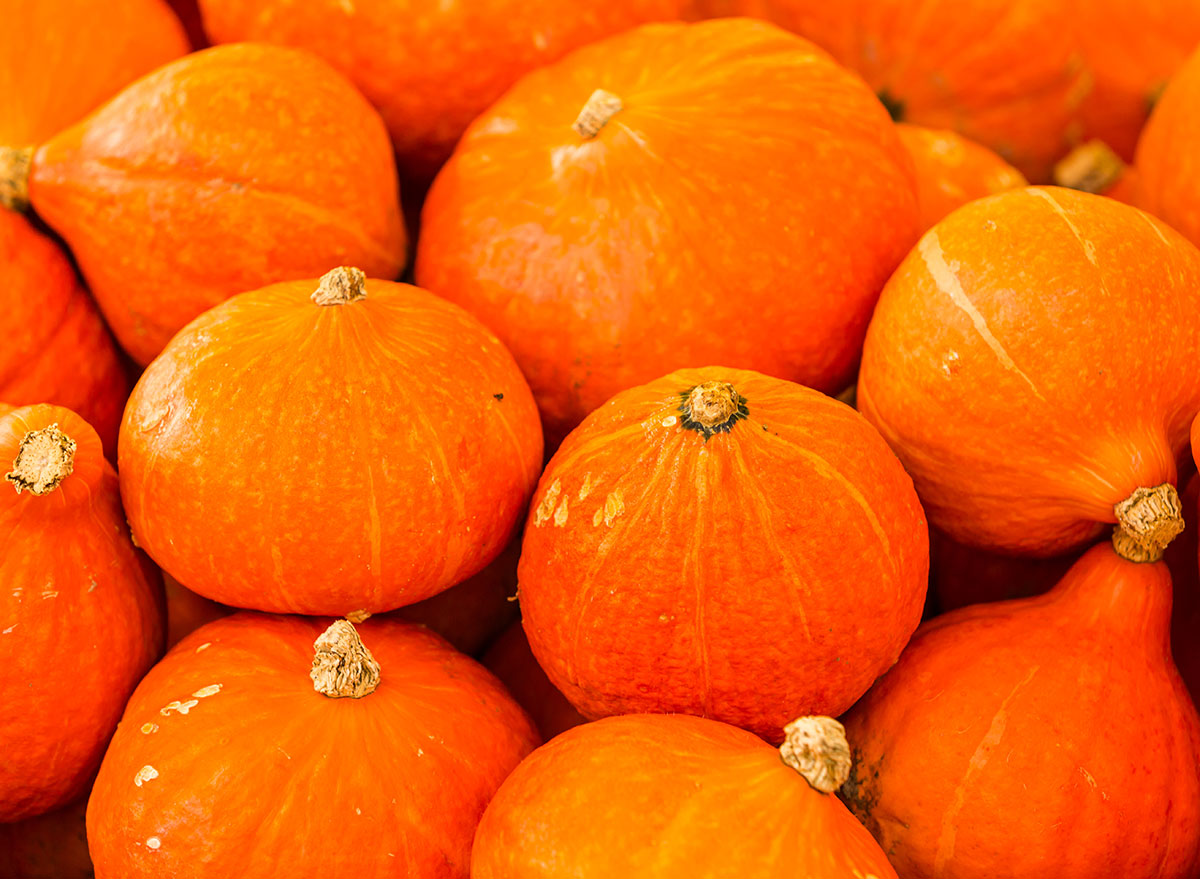
This squash is one of the smaller varieties harvested during the winter, weighing between one and three pounds. However, don't let its small appearance fool you. The flavor from the bright orange middle is sweet and nutty. When it's kept in storage, the rind gets brighter orange as the squash ripens.
Blue Hubbard
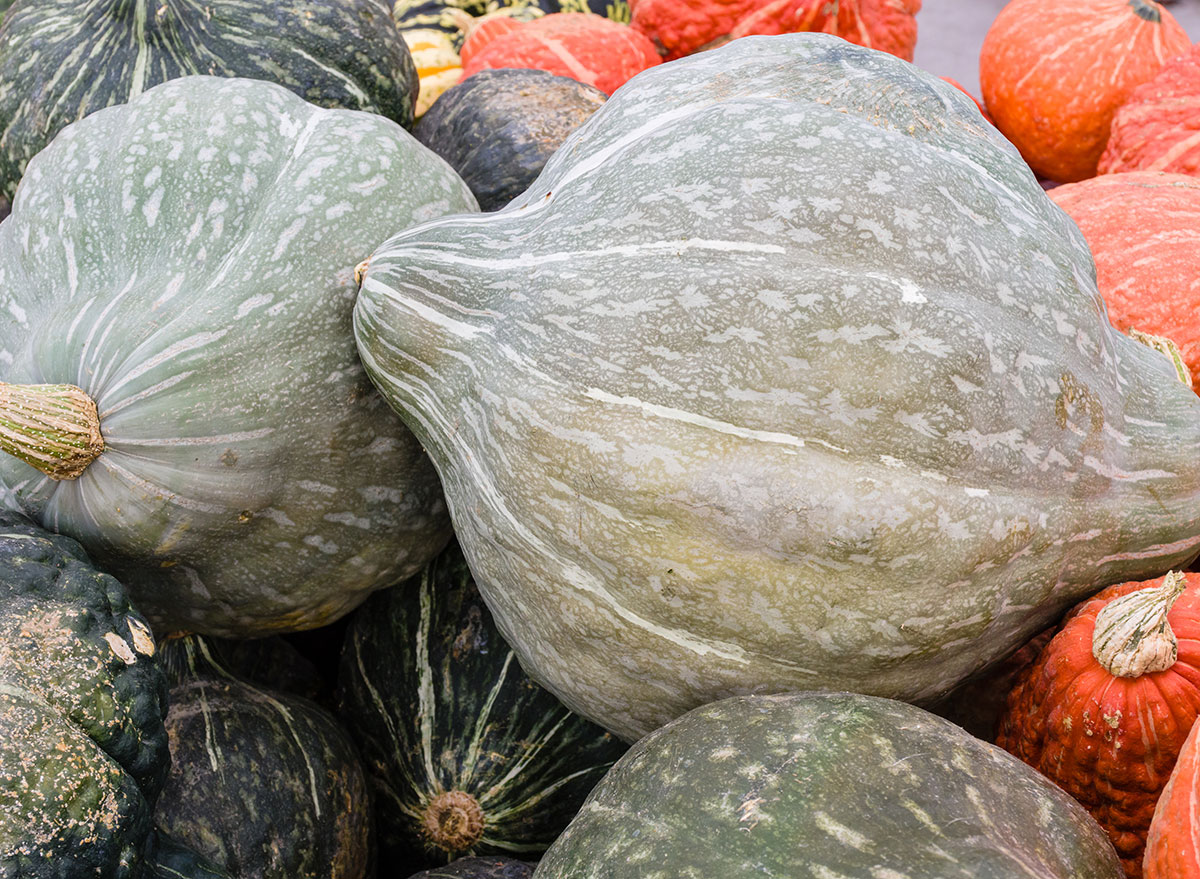
Hailing from New England, this squash's name describes its beautiful gray-blue shell. Because they are so large, this squash is found in markets divided into portions to make a manageable quantity. The flesh is slightly grainy but still sweet, making this a great choice for pie.
Spaghetti
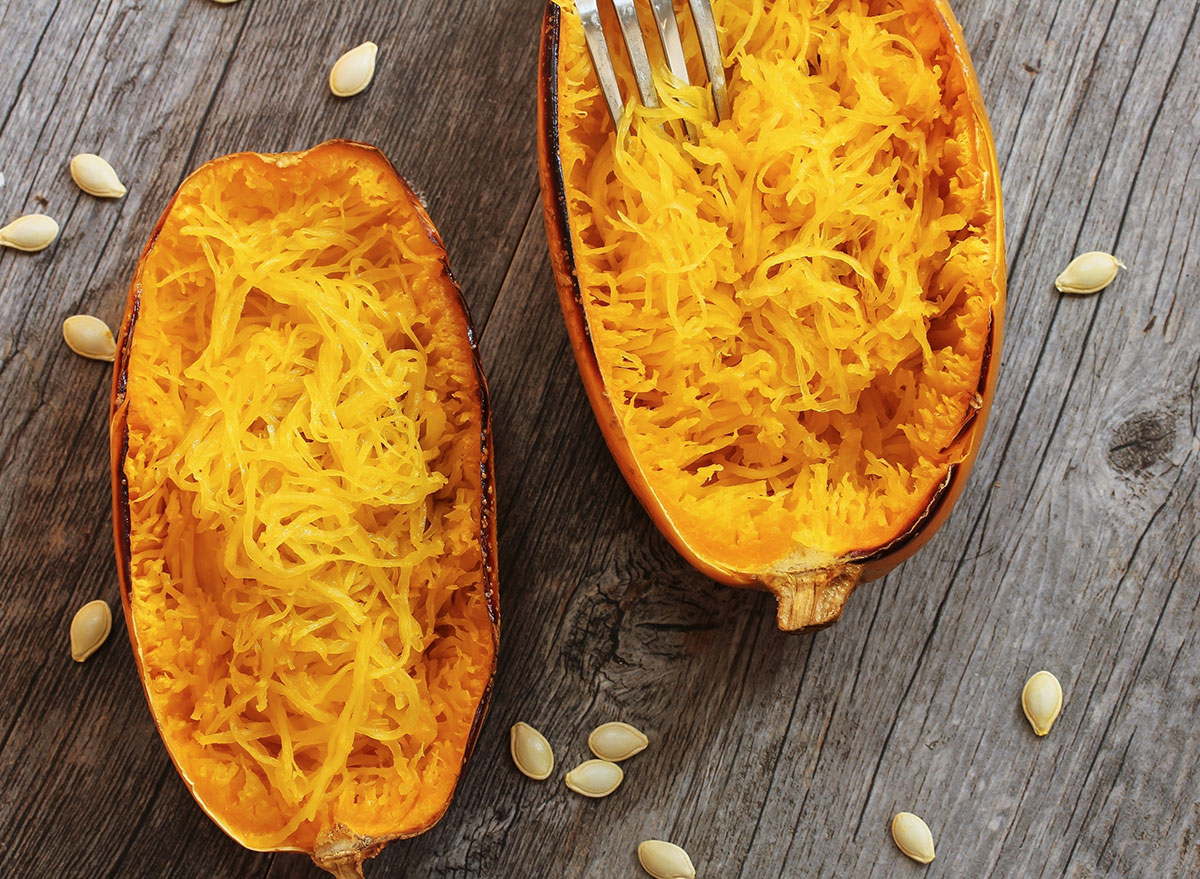
Cut spaghetti squash in half, rub it with a little olive oil, and salt and bake it cut-side down in the oven. When it's cooked, use a fork to shred the flesh and you will be surprised what you get, a delicious pasta substitute ready to be garnished with sauce. This versatile vegetable can even be cooked in the microwave, giving you endless options for a healthier Italian meal.
We love this paleo turkey Bolognese with garlic spaghetti squash recipe.
Sweet Dumpling
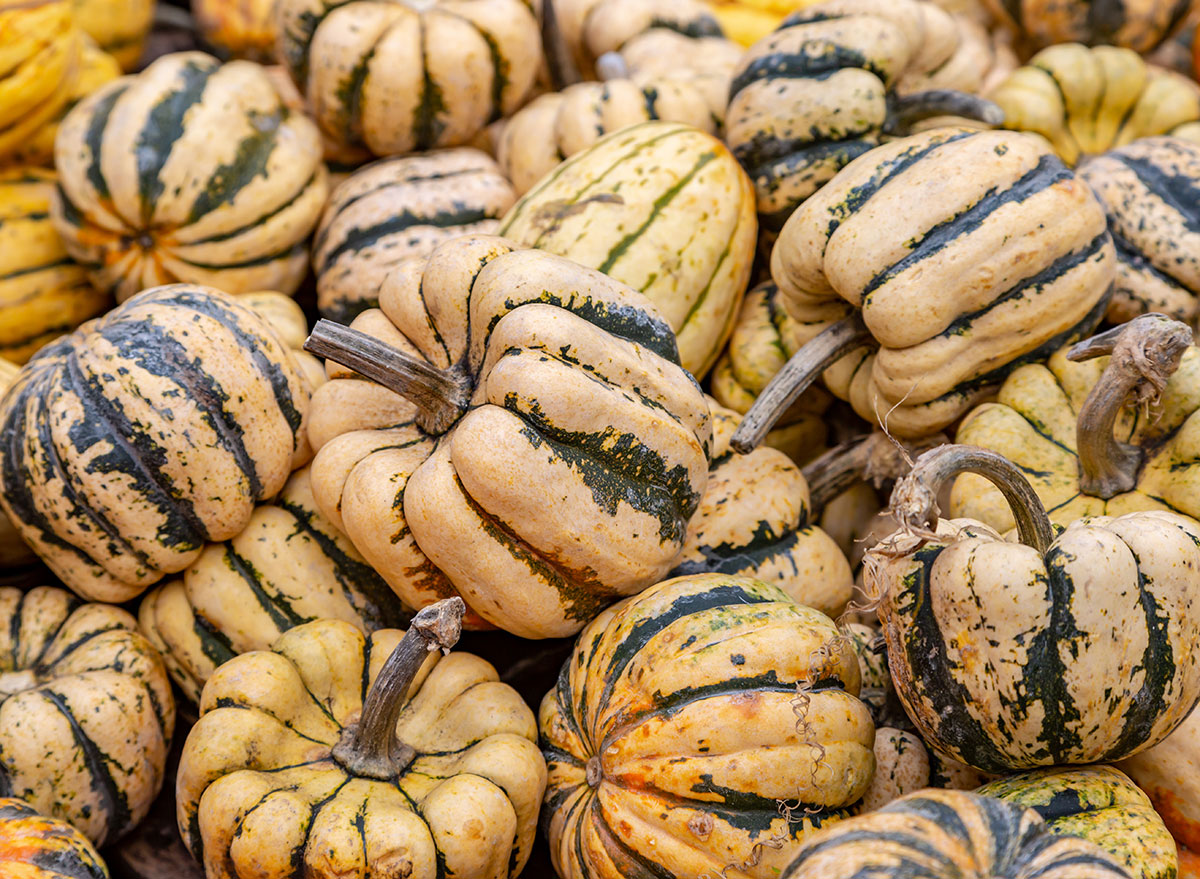
This squash is notable for its creamy skin with dark green stripes. A small variety, sweet dumpling squash usually develop fruit that's only about one pound, but they are some of the sweetest of all the squash. They make a savory puréed soup. Or, as with all the winter squash, sweet dumpling squash is wonderful when it's roasted.
Buttercup
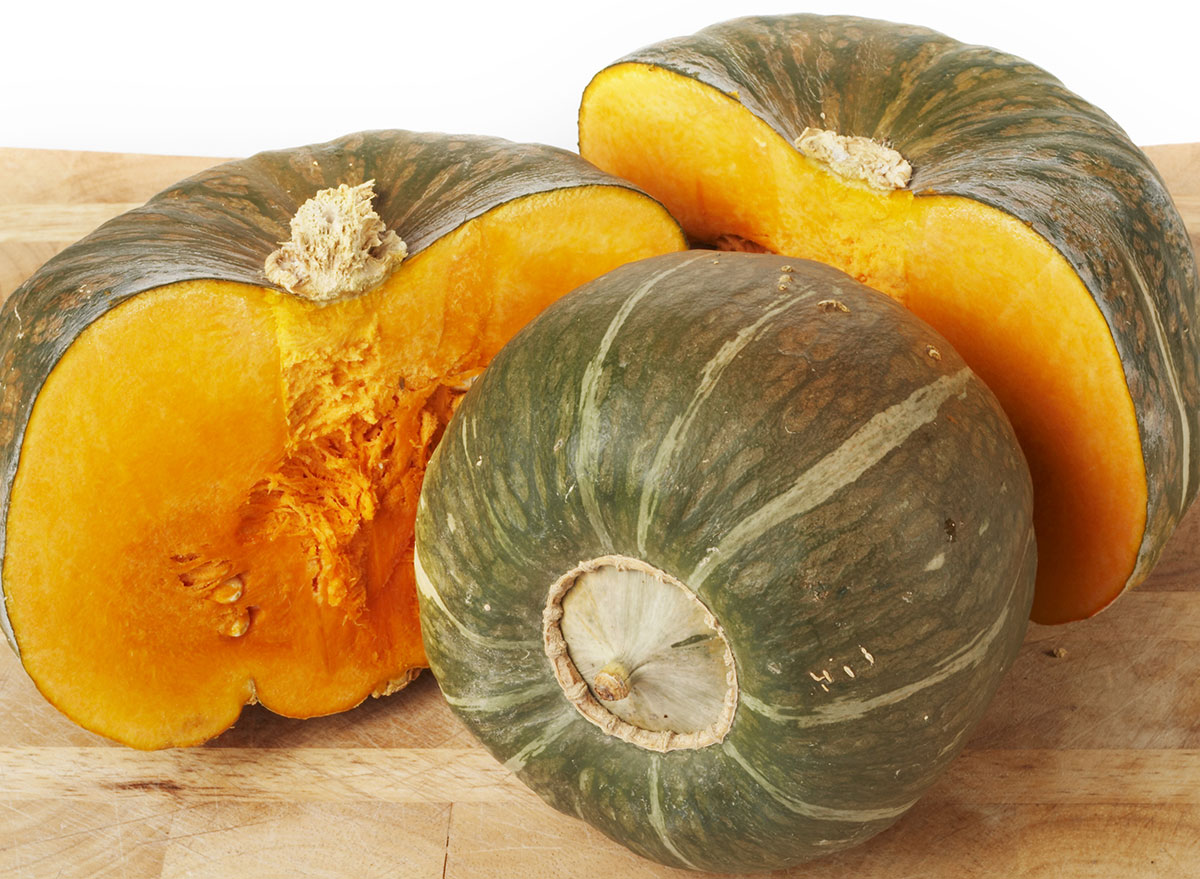
Another sweet winter types of squash, buttercup squash is known for being a good replacement for sweet potatoes in recipes. The hard, green shell is shaped like a cap, which makes it part of the turban squash family, a group of squash that has shells shaped like the headdress.
With its hard skin, this squash can keep in the pantry for a long time, usually around four months.
Banana Squash
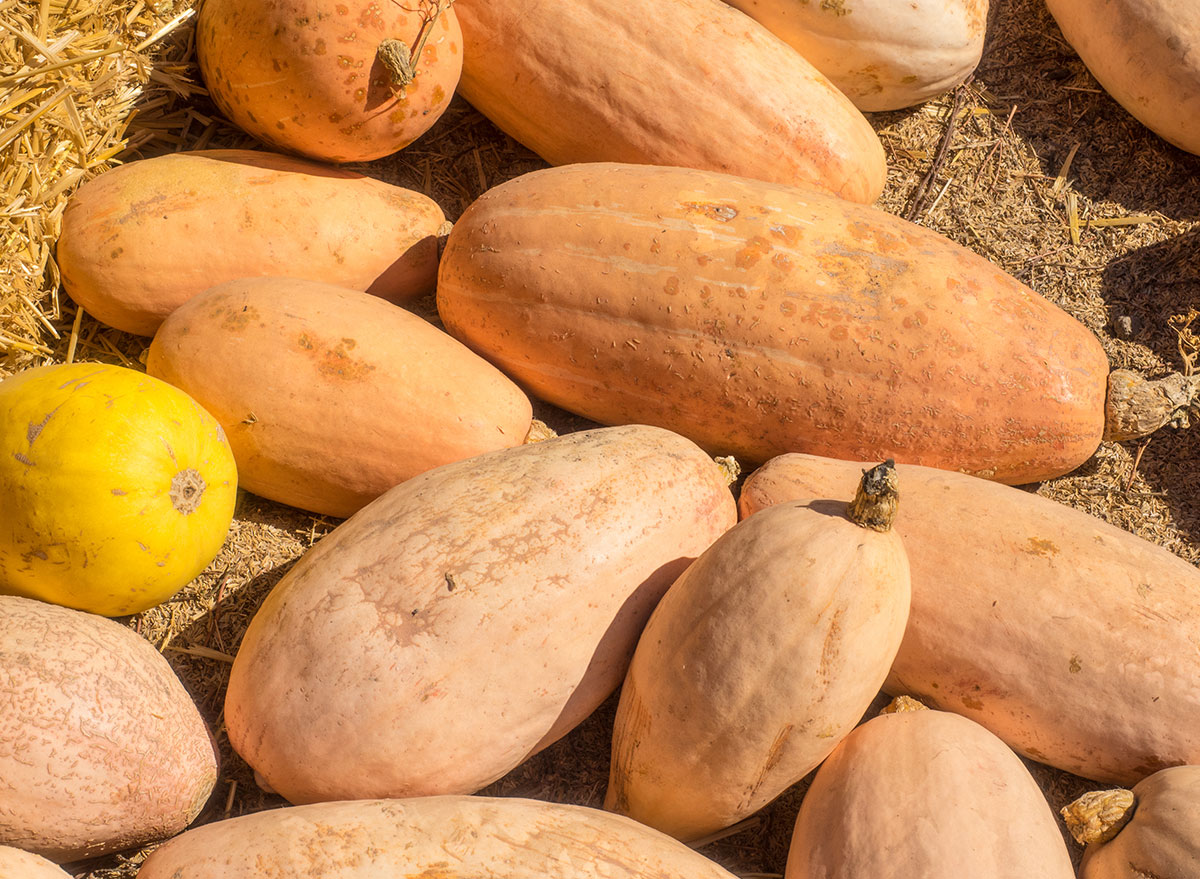
Introduced to farming in America in the 1800s, the original banana squash was blueish-grey with tan stripes. Seed companies developed more variations, including what we know as banana squash today. They are long, growing two to three feet in length and similar in shape to a banana. The slightly pink rind has light tan stripes with an orange interior.
Now that you know just how many types of squash there really are, you might want to try something new next time you're at the grocery store or farmers' market. Summer or winter, there are plenty of squash varieties in season (including plenty of types of zucchini), just waiting for you to test them out.


